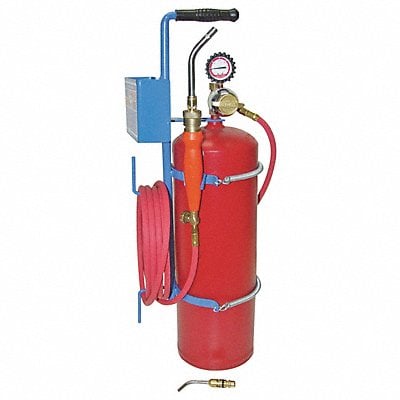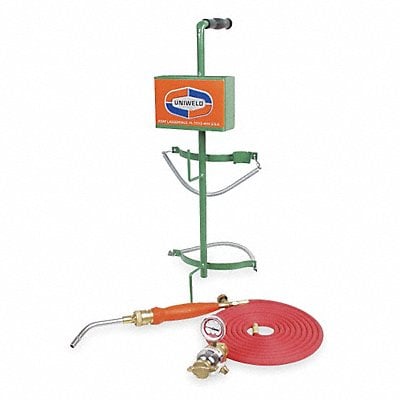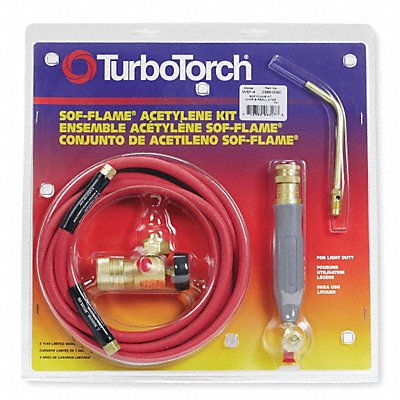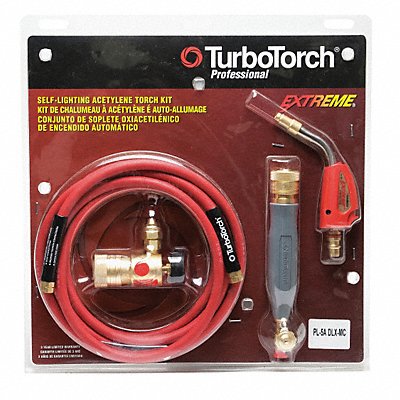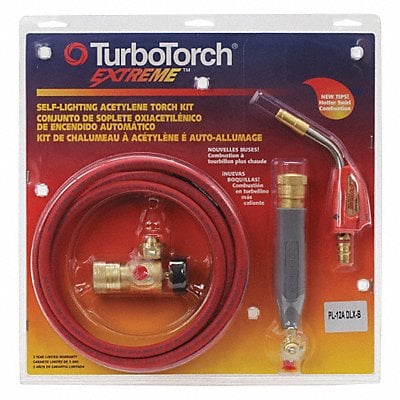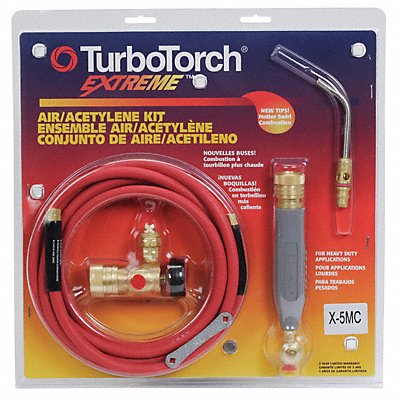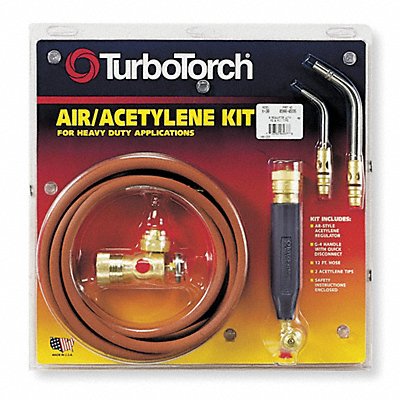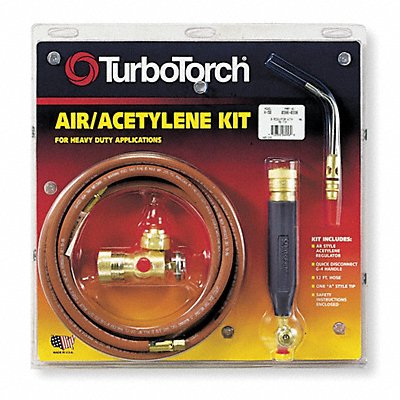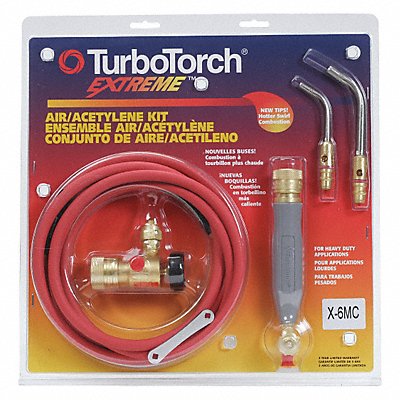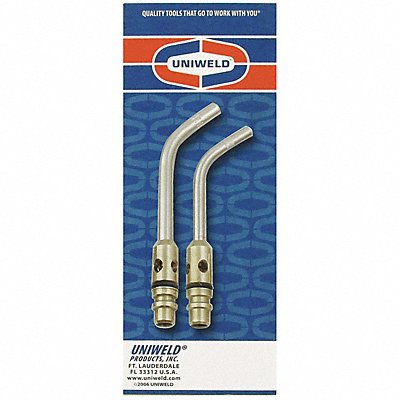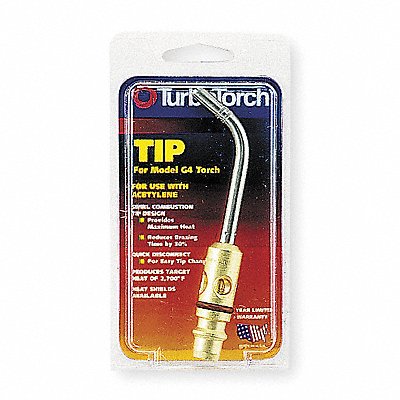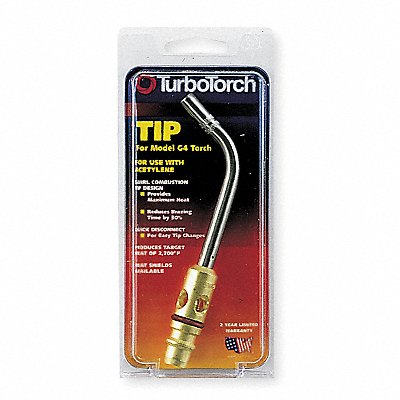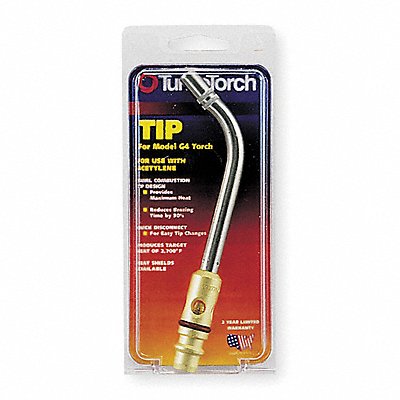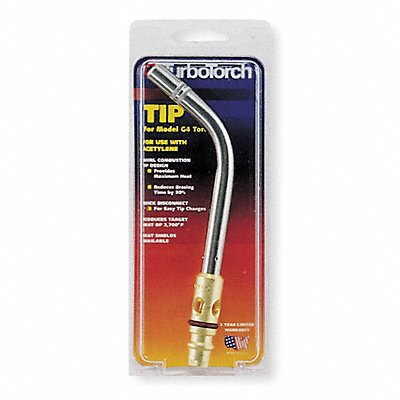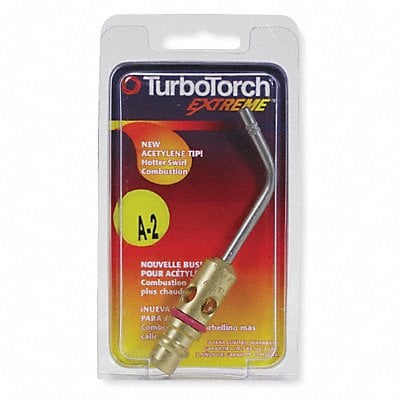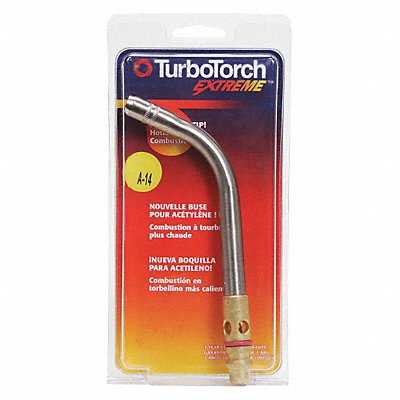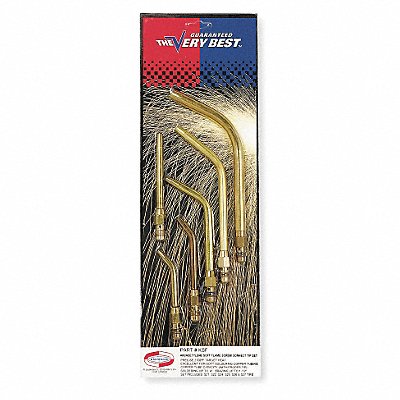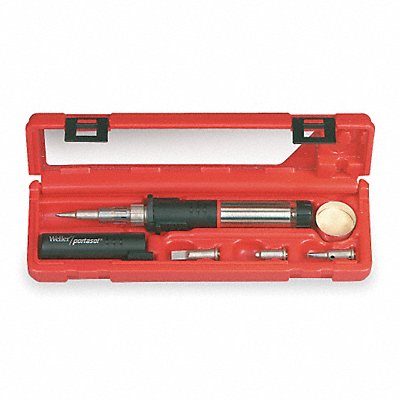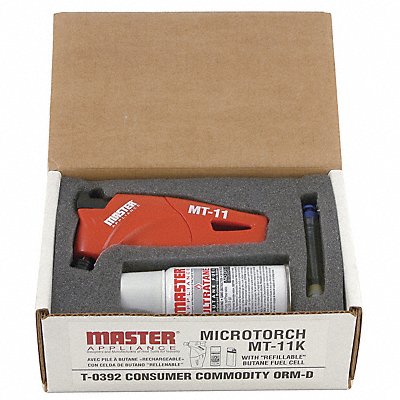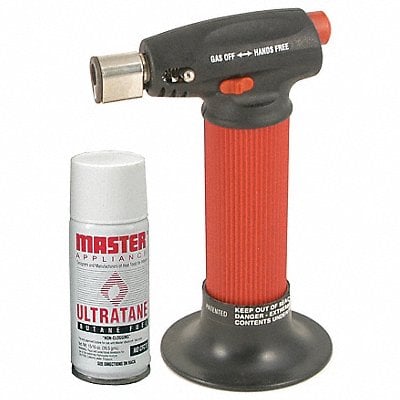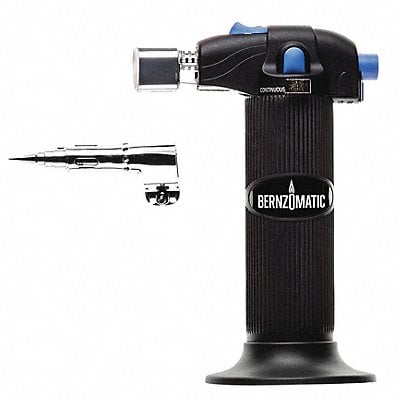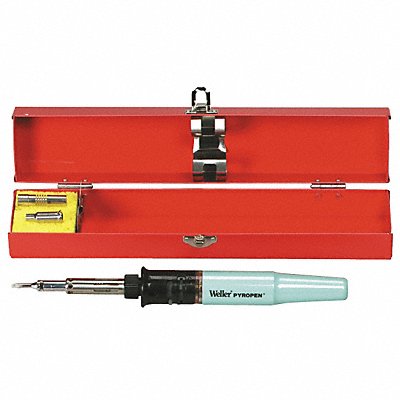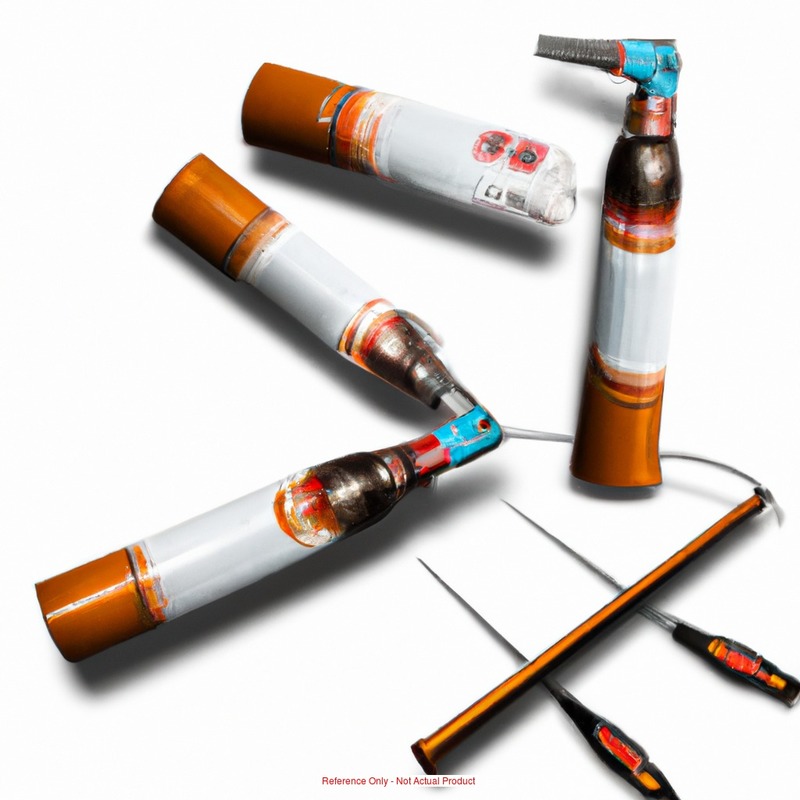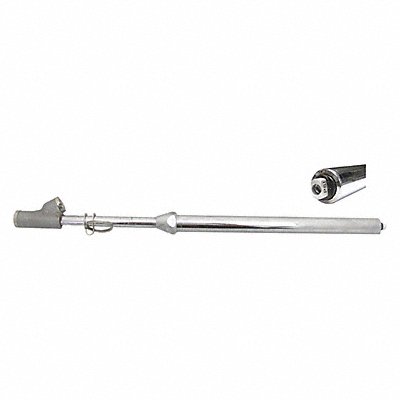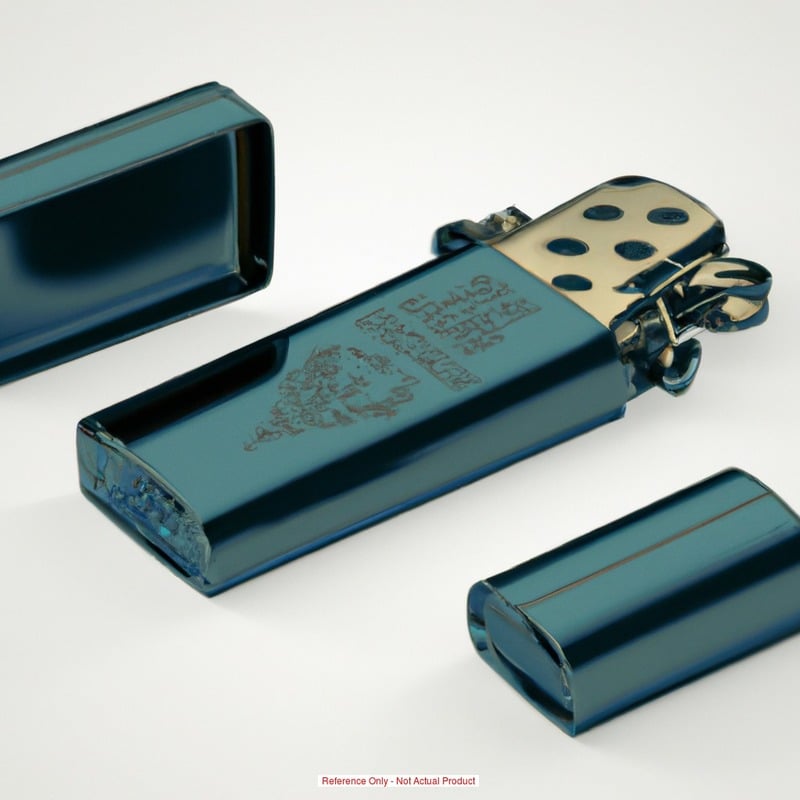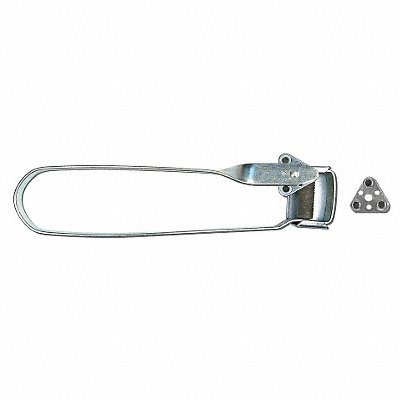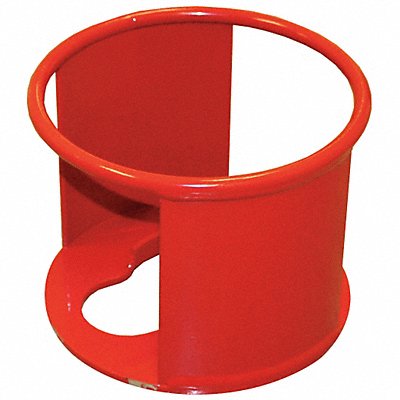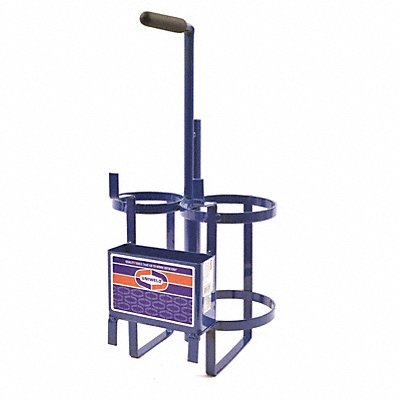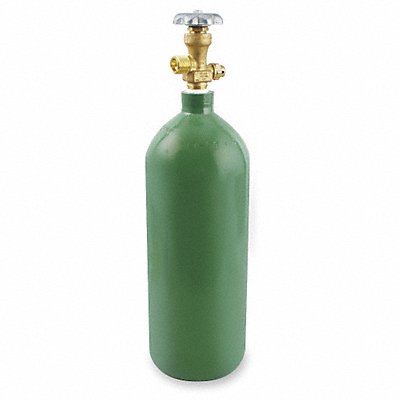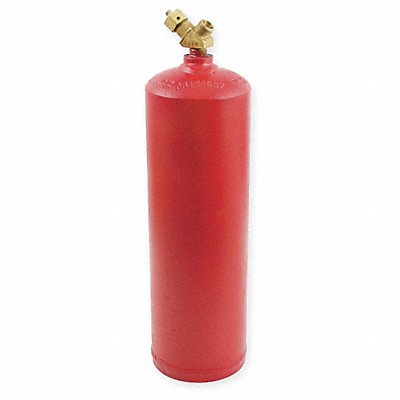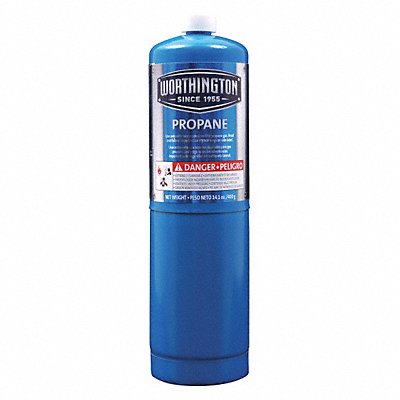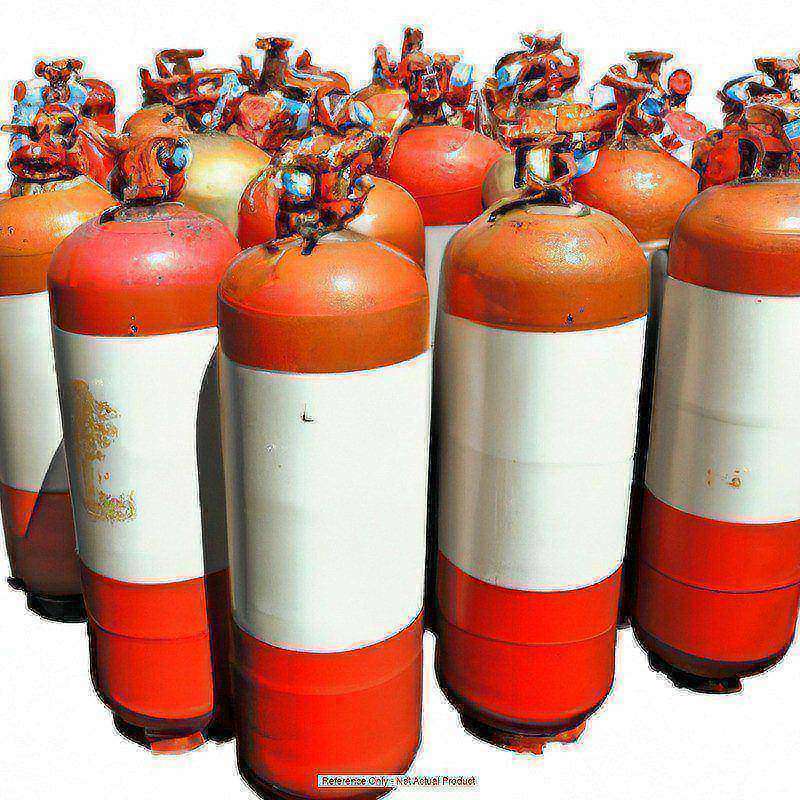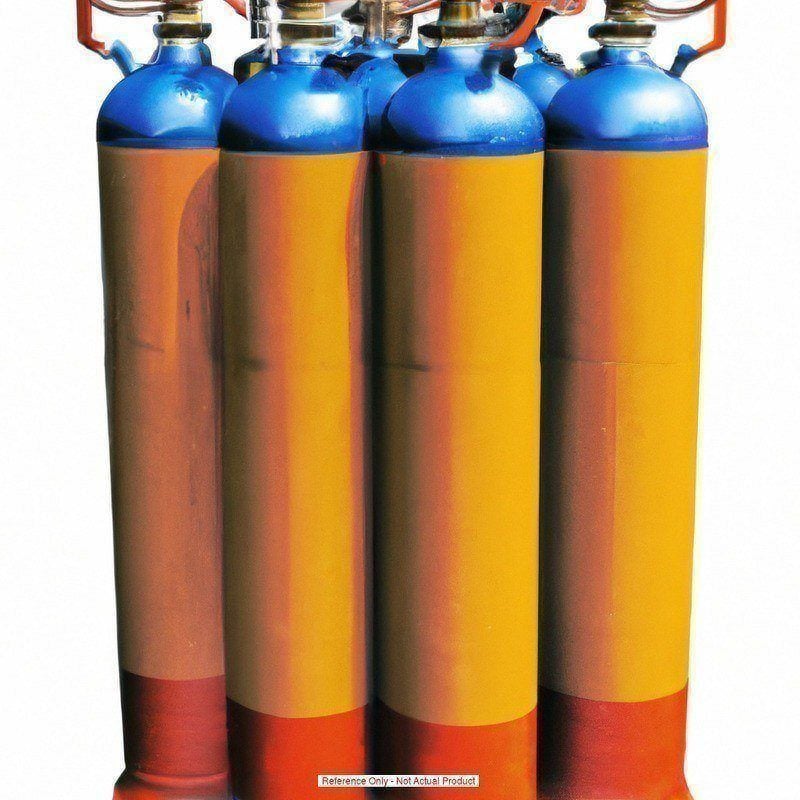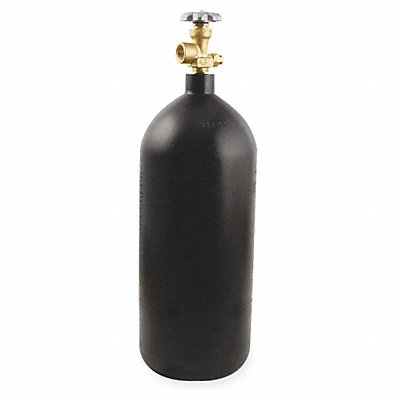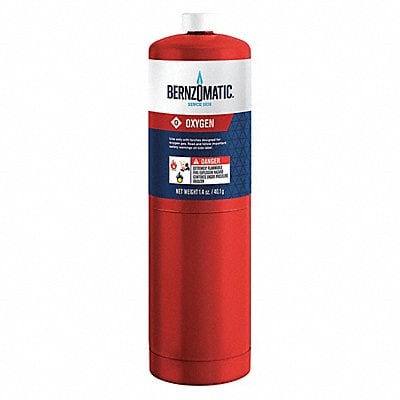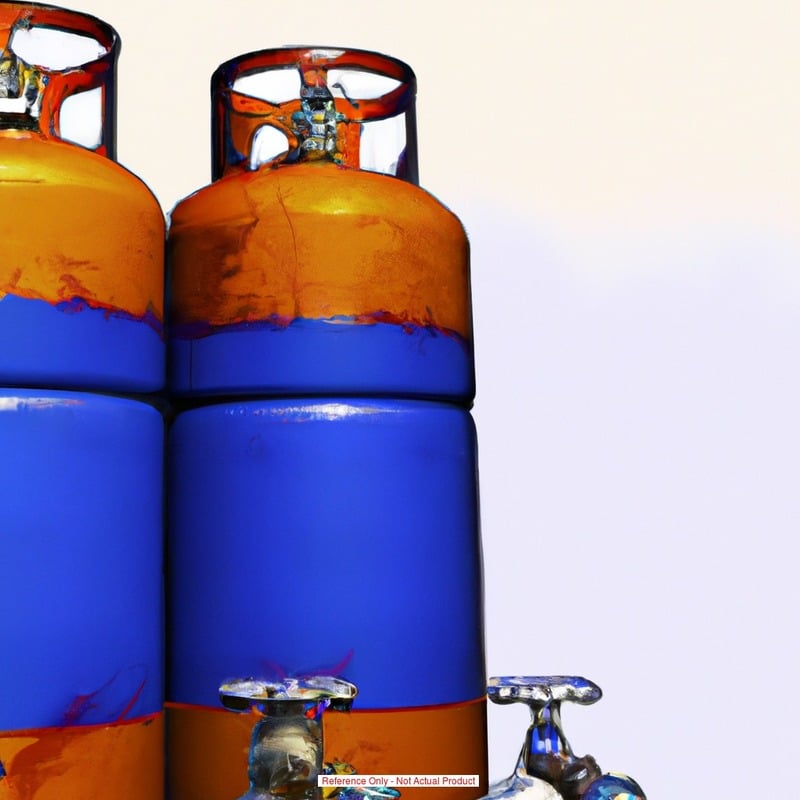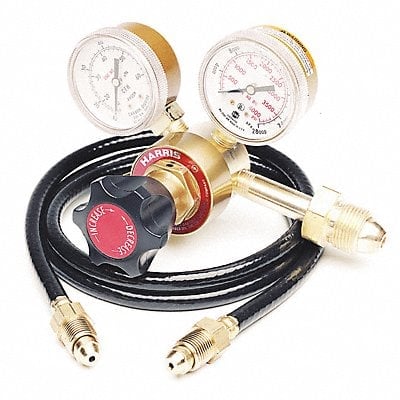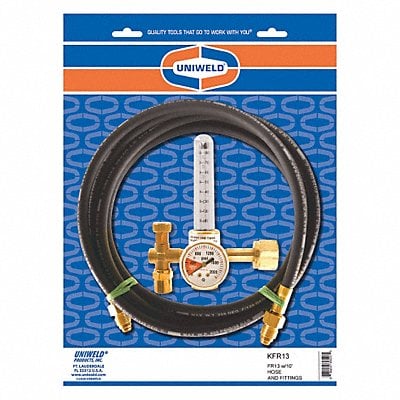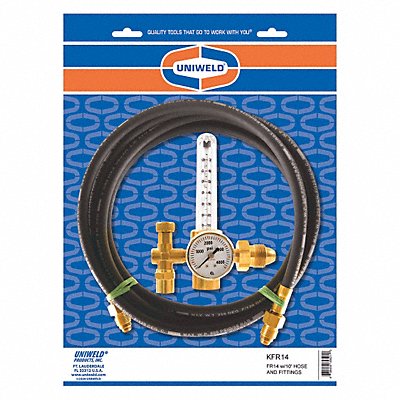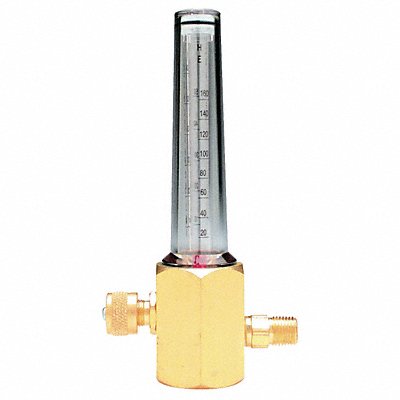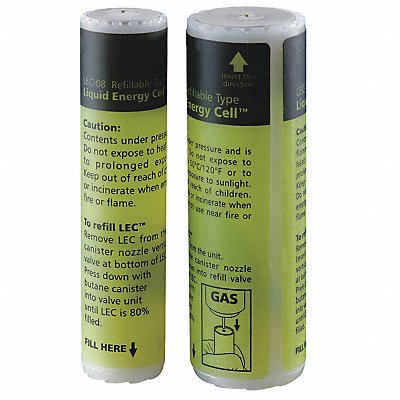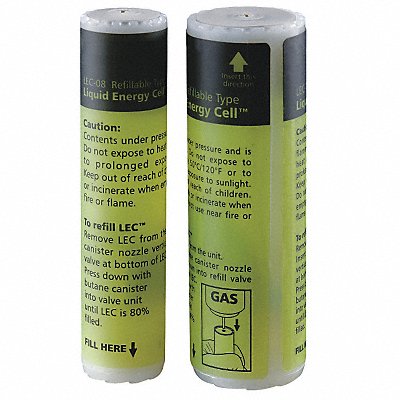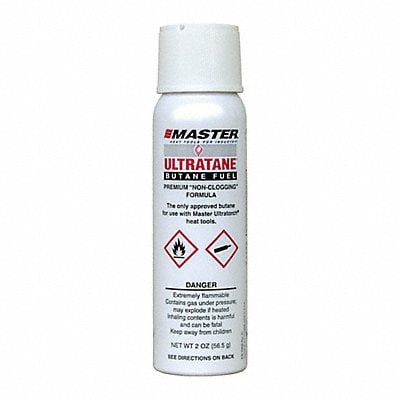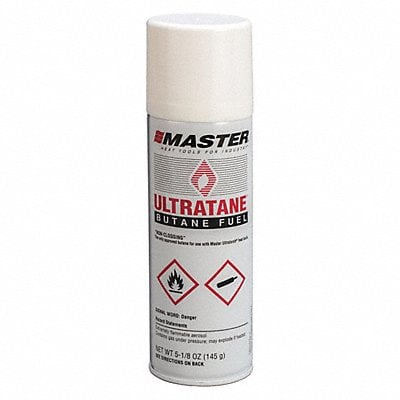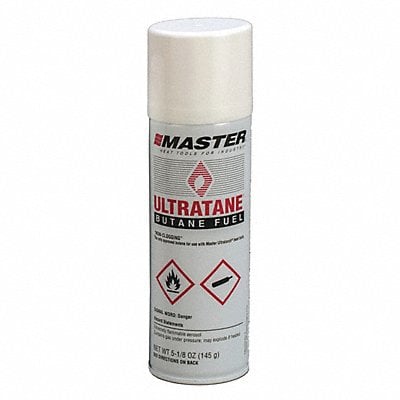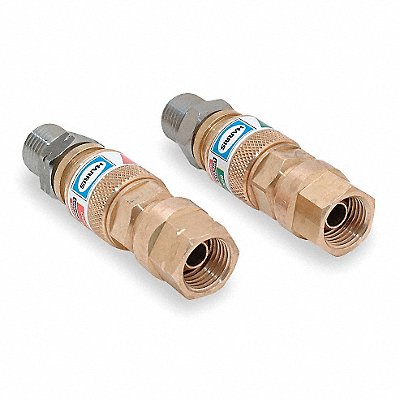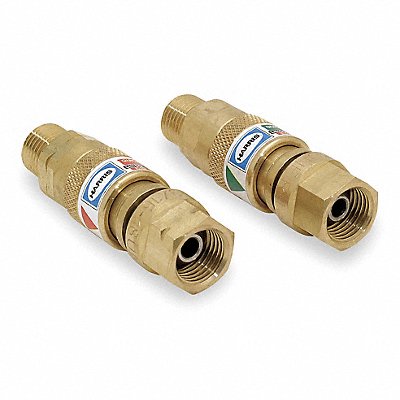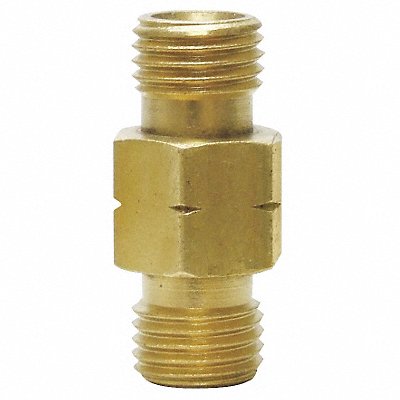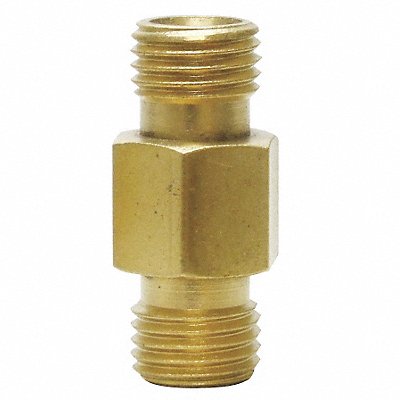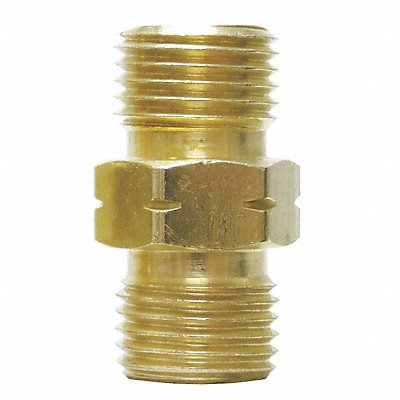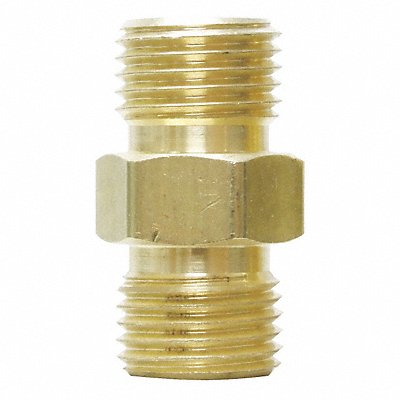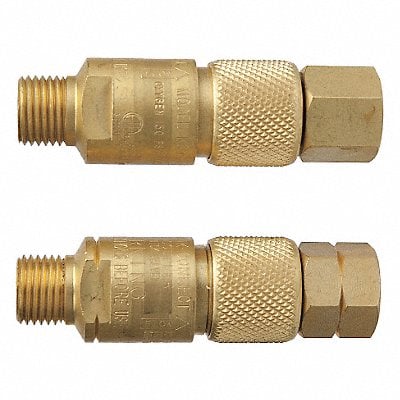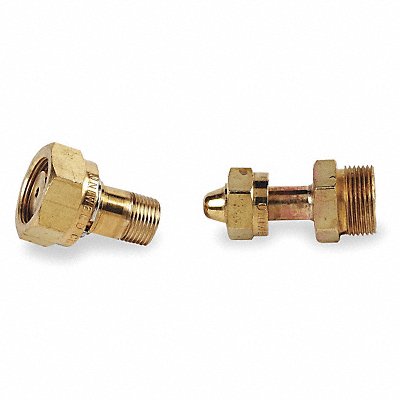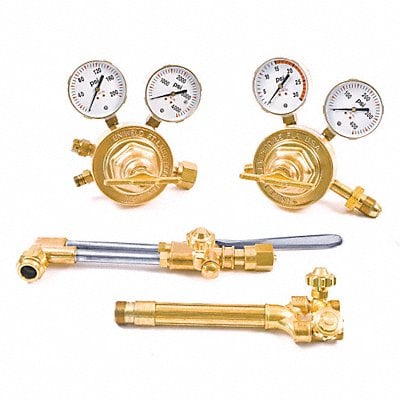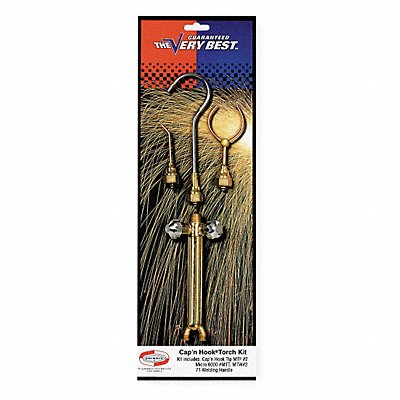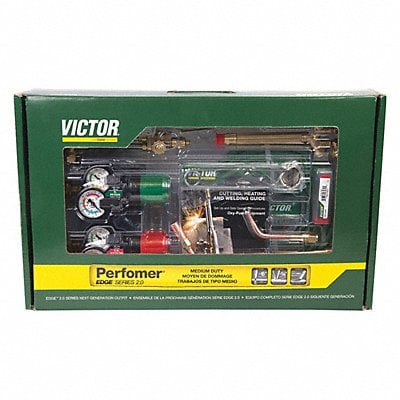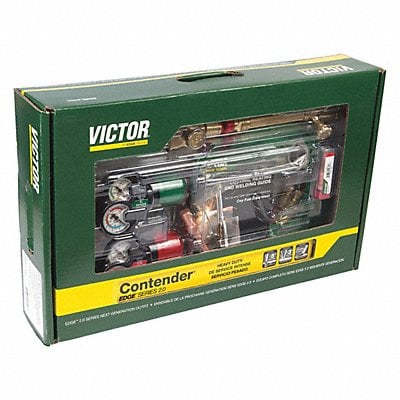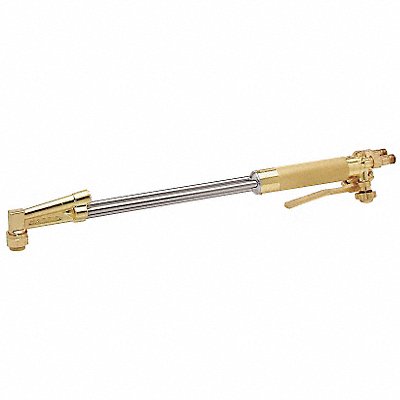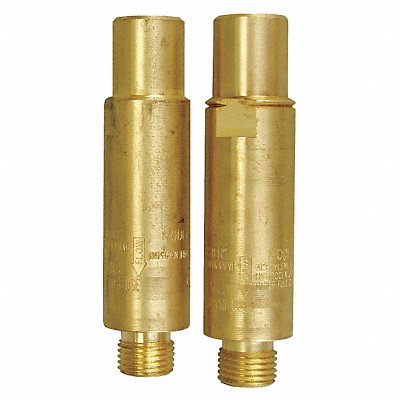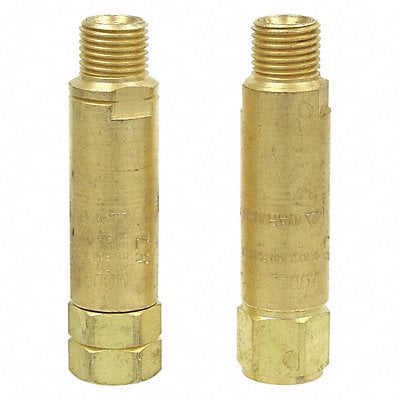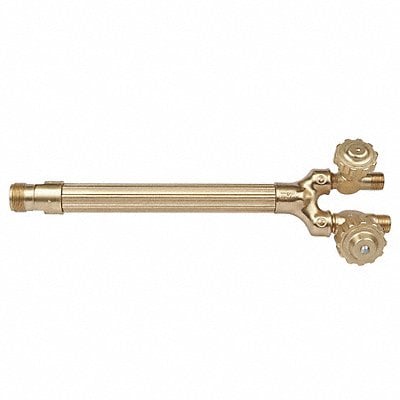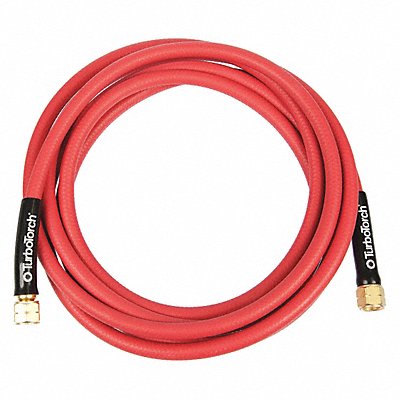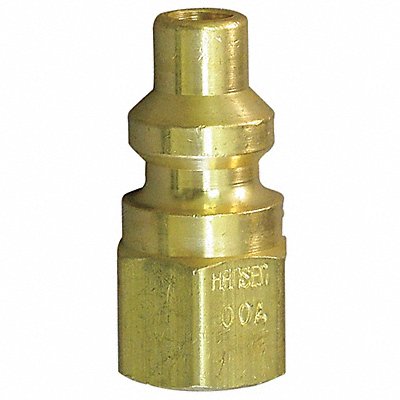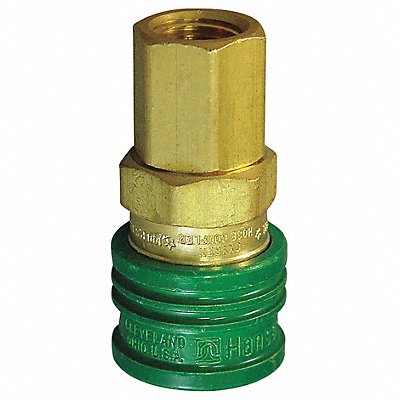Arming Your Welding Munitions: A Comprehensive Guide to Essential Welding Products

Introduction
Welcome to the ultimate guide to arming your welding arsenal! In this comprehensive blog, we delve into the diverse world of gas welding equipment available at GoVets, the nation's largest veteran-owned online store. Whether you're a seasoned professional or a DIY enthusiast, understanding the essential tools and supplies for welding is crucial. From gas cylinders and torch kits to specialty regulators and cutting attachments, we'll explore the top products, their applications across various industries, and the benefits they offer. Join us as we uncover the essentials of welding gear and discover how GoVets is your trusted partner in acquiring quality equipment while supporting veterans in the process.
Gas Welding Rods
Overview
Gas welding rods are essential consumables used in gas welding processes. They are typically made of a mixture of metals and fluxes tailored to specific welding applications.
Typical Applications
- Joining ferrous and non-ferrous metals.
- Repairing cast iron components.
- Brazing copper pipes.
- Fabricating steel structures.
- Welding aluminum alloys.
Typical Industries and Uses for those Industries
- Automotive repair shops for bodywork and exhaust system repairs.
- Construction industry for metal fabrication and repair work.
- Manufacturing plants for assembly line welding processes.
- Plumbing industry for copper pipe installations and repairs.
- Aerospace industry for welding aluminum components.
Top 5 Benefits of using Gas Welding Rods
- Versatility in welding various metals.
- Easy to handle and manipulate during welding.
- Produces strong and durable welds.
- Compatible with different welding techniques.
- Provides good penetration and fusion.
Top 5 Questions & Answers related to Gas Welding Rods
- Q: Can gas welding rods be used for TIG welding? A: No, gas welding rods are specifically designed for gas welding processes and may not be suitable for TIG welding.
- Q: What is the shelf life of gas welding rods? A: Gas welding rods should be stored in a dry environment and typically have an indefinite shelf life if stored properly.
- Q: Can gas welding rods be used for underwater welding? A: Yes, certain types of gas welding rods are suitable for underwater welding applications.
- Q: Are gas welding rods compatible with oxy-fuel welding? A: Yes, gas welding rods are commonly used in oxy-fuel welding processes.
- Q: What is the recommended flux for gas welding aluminum? A: For welding aluminum, it's recommended to use gas welding rods with flux coatings designed for aluminum welding.
Product Recommendations
Air-Acetylene Torch and Cylinder Kits
Overview
Air-acetylene torch and cylinder kits provide a portable and efficient solution for various welding and cutting applications. They consist of a torch head, hoses, regulators, and a portable cylinder containing a mixture of air and acetylene gas.
Typical Applications
- Soldering copper pipes in plumbing repairs.
- HVAC system repairs and installations.
- Jewelry making and metal crafting.
- Light-duty cutting of ferrous and non-ferrous metals.
- Brazing and heating applications in metalworking.
Typical Industries and Uses for those Industries
- HVAC contractors for installation and repair of heating and cooling systems.
- Plumbing contractors for pipefitting and repair work.
- Artisan workshops for metal sculpture and jewelry making.
- Automotive repair shops for bodywork and exhaust system repairs.
- Maintenance and repair operations in manufacturing facilities.
Top 5 Benefits of using Air-Acetylene Torch and Cylinder Kits
- Portable and easy to transport to job sites.
- Versatile for various welding and cutting applications.
- Precise flame control for detailed work.
- Quick setup and ignition for efficient workflow.
- Cost-effective solution compared to larger welding setups.
Top 5 Questions & Answers related to Air-Acetylene Torch and Cylinder Kits
- Q: Can air-acetylene torches be used for aluminum welding? A: While not ideal, air-acetylene torches can be used for aluminum welding with the appropriate filler rods and techniques.
- Q: What safety precautions should be followed when using air-acetylene torches? A: Always wear appropriate personal protective equipment (PPE), ensure proper ventilation, and inspect equipment for leaks before use.
- Q: Can air-acetylene torches be used in confined spaces? A: It's not recommended to use air-acetylene torches in confined spaces due to the risk of asphyxiation.
- Q: What is the maximum cutting thickness achievable with an air-acetylene torch? A: Air-acetylene torches are typically used for cutting materials up to 3/8 inch thick.
- Q: How often should air-acetylene cylinders be refilled? A: The frequency of cylinder refills depends on usage, but cylinders should be refilled when gas levels are low to ensure uninterrupted workflow.
Product Recommendations
Air-Acetylene Torch Kits
Overview
Air-acetylene torch kits provide a complete setup for welding, brazing, soldering, and cutting tasks. They typically include a torch handle, hoses, regulators, and tips for various applications.
Typical Applications
- HVAC system repairs and installations.
- Plumbing repairs and pipefitting.
- Automotive repairs for bodywork and exhaust systems.
- Metal fabrication and repair work.
- Jewelry making and metal crafting.
Typical Industries and Uses for those Industries
- HVAC contractors for heating and cooling system installations and repairs.
- Plumbing contractors for pipe welding and repair work.
- Automotive repair shops for bodywork and exhaust system repairs.
- Manufacturing plants for fabrication and assembly line welding processes.
- Artisan workshops for metal sculpture and jewelry making.
Top 5 Benefits of using Air-Acetylene Torch Kits
- Versatile for various welding, cutting, brazing, and soldering tasks.
- Compact and portable for use in different work environments.
- Quick and easy setup for efficient workflow.
- Precise flame control for detailed work.
- Cost-effective solution compared to larger welding setups.
Top 5 Questions & Answers related to Air-Acetylene Torch Kits
- Q: Can air-acetylene torch kits be used for aluminum welding? A: While not ideal, air-acetylene torch kits can be used for aluminum welding with the appropriate filler rods and techniques.
- Q: What size cylinders are typically used with air-acetylene torch kits? A: Air-acetylene torch kits commonly use small portable cylinders for convenience and portability.
- Q: Are air-acetylene torch kits suitable for professional welding applications? A: Yes, air-acetylene torch kits can be used for professional welding tasks, although they may have limitations compared to larger welding setups.
- Q: How do I adjust the flame on an air-acetylene torch? A: Flame adjustment is typically done using the torch handle's control knobs to regulate gas flow and oxygen mixture.
- Q: Can air-acetylene torch kits be used for cutting thick metal? A: Air-acetylene torch kits are suitable for cutting thin to medium-thickness metals, but may not be efficient for cutting thick materials.
Product Recommendations
Air-Acetylene Torch Tips
Overview
Air-acetylene torch tips are interchangeable nozzles that attach to the torch handle and regulate the flame for specific welding, brazing, soldering, or cutting applications.
Typical Applications
- Precision welding of small components.
- Brazing of copper pipes in plumbing applications.
- Soldering electronic circuits and components.
- Heating and bending metal for fabrication.
- Light-duty cutting of thin materials.
Typical Industries and Uses for those Industries
- Electronics industry for soldering and rework of circuit boards.
- Plumbing industry for copper pipe installations and repairs.
- Jewelry making industry for precise metalwork.
- Automotive repair shops for bodywork and exhaust system repairs.
- Artisan workshops for metal crafting and sculpture.
Top 5 Benefits of using Air-Acetylene Torch Tips
- Precise flame control for detailed work.
- Interchangeable tips for versatility in applications.
- Efficient heat transfer for faster welding and brazing.
- Compatible with various torch handle designs.
- Durable construction for long-term use.
Top 5 Questions & Answers related to Air-Acetylene Torch Tips
- Q: Can air-acetylene torch tips be used with propane gas? A: Air-acetylene torch tips are designed for use with acetylene gas and may not perform optimally with propane.
- Q: How do I select the right torch tip size for my welding application? A: Torch tip size selection depends on the material thickness and desired flame characteristics. Consult the torch manufacturer's recommendations for guidance.
- Q: Can air-acetylene torch tips be cleaned and reused? A: Yes, torch tips can be cleaned using appropriate tools and solvents to remove debris and oxides.
- Q: Are air-acetylene torch tips compatible with all torch handles? A: Torch tip compatibility depends on the threading and design of the torch handle. Ensure compatibility before purchasing.
- Q: How do I prevent flashback when using air-acetylene torch tips? A: Use flashback arrestors and check valves to prevent flashback incidents during welding operations.
Product Recommendations
Butane Soldering Irons Torches Heat Tools
Overview
Butane soldering irons, torches, and heat tools are portable, handheld devices powered by butane gas. They offer convenience and versatility for soldering, brazing, heat shrinking, and other applications.
Typical Applications
- Electrical soldering for circuit board repairs and component installations.
- Jewelry making for soldering precious metals and stones.
- Plumbing repairs for copper pipe soldering and brazing.
- Automotive repairs for soldering electrical connections and heat shrinking tubing.
- DIY projects for arts, crafts, and hobbyist applications.
Typical Industries and Uses for those Industries
- Electronics repair shops for soldering and desoldering electronic components.
- Jewelry workshops for soldering intricate designs and settings.
- Plumbing contractors for copper pipe installations and repairs.
- Automotive garages for electrical system repairs and modifications.
- DIY enthusiasts for a wide range of soldering and heat-related projects.
Top 5 Benefits of using Butane Soldering Irons Torches Heat Tools
- Portability for on-the-go repairs and projects.
- Quick heat-up time for rapid work progress.
- Adjustable temperature settings for versatile applications.
- Refillable butane fuel for long-lasting use.
- Compact design for easy storage and handling.
Top 5 Questions & Answers related to Butane Soldering Irons Torches Heat Tools
- Q: Can butane soldering irons be used for heavy-duty soldering tasks? A: While suitable for most soldering tasks, butane soldering irons may not be ideal for large-scale or prolonged soldering applications.
- Q: How long does a butane soldering iron fuel refill last? A: The duration depends on usage frequency and heat settings but typically lasts for several hours of continuous operation.
- Q: Are butane soldering irons safe to use indoors? A: Yes, butane soldering irons are safe for indoor use when used in well-ventilated areas and following manufacturer's safety guidelines.
- Q: Can butane soldering irons be used at high altitudes? A: Yes, butane soldering irons can operate at high altitudes, although they may require adjustments in fuel flow due to decreased oxygen levels.
- Q: How do I maintain a butane soldering iron for optimal performance? A: Regular cleaning, refueling, and inspection of components ensure consistent performance and longevity of the tool.
Product Recommendations
Butane Soldering Irons Torches Heat Tools
Overview
Butane soldering irons, torches, and heat tools are versatile devices powered by butane gas, offering convenience and flexibility for various soldering, brazing, and heating applications.
Typical Applications
- Electrical soldering for circuit board repairs and wiring.
- Jewelry making for soldering metals and intricate designs.
- Automotive repairs for soldering electrical connections and heat shrinking tubing.
- DIY projects for arts, crafts, and hobbyist applications.
- Plumbing repairs for copper pipe soldering and brazing.
Typical Industries and Uses for those Industries
- Electronics repair shops for soldering and desoldering electronic components.
- Jewelry workshops for soldering metals and repairing jewelry.
- Automotive garages for electrical system repairs and modifications.
- Artisan workshops for metalworking and crafting projects.
- Plumbing contractors for pipe installations and repairs.
Top 5 Benefits of using Butane Soldering Irons Torches Heat Tools
- Portable and cordless for use in various locations.
- Adjustable temperature control for precise soldering.
- Quick heat-up time for efficient workflow.
- Refillable butane fuel for long-lasting operation.
- Versatile applications for soldering, brazing, and heat shrinking.
Top 5 Questions & Answers related to Butane Soldering Irons Torches Heat Tools
- Q: Can butane soldering irons be used for soldering electronics? A: Yes, butane soldering irons are suitable for soldering and desoldering electronic components, including circuit boards and wiring.
- Q: Are butane soldering irons safe to use indoors? A: When used in well-ventilated areas and following safety precautions, butane soldering irons can be safely used indoors.
- Q: How do I refill a butane soldering iron? A: Refilling a butane soldering iron involves filling the fuel tank with butane gas using a compatible refill canister.
- Q: What is the maximum temperature of a butane soldering iron? A: The maximum temperature varies depending on the model but typically ranges between 1000°F to 2400°F (538°C to 1315°C).
- Q: Can butane soldering irons be used for heat shrinking tubing? A: Yes, butane soldering irons can generate sufficient heat for heat shrinking tubing and other heat-related tasks.
Product Recommendations
Flint Lighter Renewals
Overview
Flint lighter renewals are essential accessories for maintaining gas-powered ignition systems used in welding torches and equipment. These renewals ensure reliable spark generation for safe and efficient operation.
Typical Applications
- Welding torches for igniting oxy-fuel and gas welding equipment.
- Brazing torches for starting and controlling the flame in brazing operations.
- Cutting torches for initiating the cutting process in oxy-fuel cutting applications.
- Heating torches for heating metals and materials in various welding and fabrication tasks.
- Soldering torches for soldering electronic components and plumbing fittings.
Typical Industries and Uses for those Industries
- Metal fabrication workshops for welding, cutting, and brazing operations.
- Automotive repair garages for welding and metal repair tasks.
- Construction sites for on-site fabrication and repair work.
- Plumbing contractors for soldering and brazing copper pipes and fittings.
- Manufacturing facilities for metalworking processes and assembly operations.
Top 5 Benefits of using Flint Lighter Renewals
- Ensure consistent spark generation for reliable ignition.
- Extend the lifespan of gas ignition systems and torches.
- Easy to install and replace without specialized tools.
- Compatible with a wide range of gas welding and cutting equipment.
- Cost-effective solution for maintaining welding torches and accessories.
Top 5 Questions & Answers related to Flint Lighter Renewals
- Q: How often should I replace the flint in my welding torch lighter? A: It's recommended to replace the flint when it becomes worn down or fails to produce a consistent spark, typically every few months with regular use.
- Q: Are flint lighter renewals compatible with all types of welding torches? A: Yes, most flint lighter renewals are designed to be compatible with a wide range of gas-powered welding torches and equipment.
- Q: Can I use flint lighter renewals in electric ignition systems? A: No, flint lighter renewals are specifically designed for use in gas-powered ignition systems and are not suitable for electric ignition systems.
- Q: How do I install a flint lighter renewal in my welding torch? A: Installation typically involves unscrewing the cap of the lighter assembly, removing the old flint, inserting the new flint, and reassembling the lighter.
- Q: Can I purchase flint lighter renewals in bulk quantities? A: Yes, many suppliers offer flint lighter renewals in bulk packs for convenience and cost savings.
Product Recommendations
Flint Lighters
Overview
Flint lighters are essential tools for igniting gas-powered welding and cutting equipment, providing a reliable and consistent spark for safe operation in various metalworking applications.
Typical Applications
- Igniting oxy-fuel torches for welding, cutting, and brazing operations.
- Starting gas-powered heating torches for preheating metals and materials.
- Lighting soldering torches for electronic soldering and plumbing applications.
- Initiating the flame in brazing torches for joining metals with filler material.
- Starting cutting torches for oxy-fuel cutting and severing metals.
Typical Industries and Uses for those Industries
- Metal fabrication workshops for welding, cutting, and metal joining processes.
- Automotive repair and restoration shops for metal repair and fabrication tasks.
- Construction sites for on-site welding, cutting, and fabrication work.
- Plumbing contractors for soldering and brazing copper pipes and fittings.
- Manufacturing facilities for metalworking processes and assembly operations.
Top 5 Benefits of using Flint Lighters
- Reliable spark generation for consistent ignition of gas torches.
- Durable construction for long-lasting performance in industrial environments.
- Ergonomic design for comfortable and easy operation by welders and fabricators.
- Refillable fuel reservoir for extended use without frequent refills.
- Versatile tool suitable for various welding, cutting, and brazing applications.
Top 5 Questions & Answers related to Flint Lighters
- Q: Are flint lighters refillable? A: Yes, most flint lighters feature a refillable fuel reservoir that can be replenished with butane or other suitable fuels.
- Q: Can I use flint lighters in windy conditions? A: While flint lighters can be used in moderate wind conditions, it's recommended to shield the flame from strong gusts to ensure reliable ignition.
- Q: How do I adjust the flame on a flint lighter? A: Many flint lighters feature an adjustable flame control knob or lever that allows users to regulate the size and intensity of the flame.
- Q: Are flint lighters suitable for outdoor use? A: Yes, flint lighters can be used outdoors, but precautions should be taken to protect the flame from wind and adverse weather conditions.
- Q: Can I replace the flint in a flint lighter? A: Yes, most flint lighters are designed with a replaceable flint mechanism, allowing users to easily replace worn or depleted flints.
Product Recommendations
Gas Cylinder Brackets
Overview
Gas cylinder brackets are essential safety accessories used to secure gas cylinders in place, preventing them from tipping or falling during storage or transport. These brackets are designed to accommodate various cylinder sizes and can be mounted to walls, floors, or other suitable surfaces.
Typical Applications
- Securing gas cylinders in welding workshops, garages, and industrial facilities.
- Mounting gas cylinders on trucks, trailers, or vehicles for transportation.
- Storing compressed gas cylinders in warehouses and storage areas.
- Securing gas cylinders in laboratories, research facilities, and educational institutions.
- Installing gas cylinder brackets in emergency response vehicles for mobile welding and cutting operations.
Typical Industries and Uses for those Industries
- Welding and metal fabrication industries for storing and transporting welding gases.
- Healthcare facilities for storing medical gases used in patient care and treatment.
- Manufacturing plants for storing industrial gases used in various production processes.
- Construction sites for securing gas cylinders used in welding and cutting applications.
- Automotive repair shops for storing and transporting welding gases for repairs and fabrication.
Top 5 Benefits of using Gas Cylinder Brackets
- Enhanced safety by preventing gas cylinders from tipping or falling.
- Space-saving design allows for efficient storage of cylinders in tight spaces.
- Durable construction for long-lasting performance in industrial environments.
- Versatile mounting options for flexibility in installation locations.
- Compliance with safety regulations and standards for handling compressed gases.
Top 5 Questions & Answers related to Gas Cylinder Brackets
- Q: Are gas cylinder brackets adjustable to accommodate different cylinder sizes? A: Yes, many gas cylinder brackets feature adjustable arms or straps to accommodate various cylinder diameters and sizes.
- Q: Can gas cylinder brackets be used outdoors? A: Yes, gas cylinder brackets designed for outdoor use are typically made of weather-resistant materials and feature corrosion-resistant coatings.
- Q: How are gas cylinder brackets installed? A: Gas cylinder brackets can be installed using screws, bolts, or other suitable fasteners, depending on the mounting surface and application requirements.
- Q: Are gas cylinder brackets suitable for high-pressure gas cylinders? A: Yes, gas cylinder brackets are designed to securely hold high-pressure gas cylinders in place, providing safe storage and transport.
- Q: Can gas cylinder brackets be used for storing other types of cylinders? A: While gas cylinder brackets are specifically designed for holding gas cylinders, they can also be used for storing similar-sized cylindrical objects, such as fire extinguishers or chemical containers.
Product Recommendations
Gas Cylinder Collars
Overview
Gas cylinder collars are safety devices used to secure gas cylinders in place and prevent them from rolling or tipping over during storage or transport. These collars are typically made of durable materials and feature adjustable straps or clamps to accommodate various cylinder sizes.
Typical Applications
- Securing gas cylinders on welding carts, racks, or storage shelves.
- Stabilizing gas cylinders during transportation on trucks, trailers, or vehicles.
- Preventing gas cylinders from tipping over in industrial facilities and workshops.
- Securing medical gas cylinders in hospitals, clinics, and healthcare facilities.
- Enhancing safety in laboratories, research facilities, and educational institutions.
Typical Industries and Uses for those Industries
- Welding and metal fabrication industries for storing and transporting welding gases.
- Healthcare facilities for storing medical gases used in patient care and treatment.
- Manufacturing plants for storing industrial gases used in various production processes.
- Construction sites for securing gas cylinders used in welding and cutting applications.
- Educational institutions for safely storing and handling gas cylinders in science laboratories and workshops.
Top 5 Benefits of using Gas Cylinder Collars
- Prevent gas cylinders from rolling or tipping over, reducing the risk of accidents.
- Adjustable design accommodates cylinders of different sizes and diameters.
- Durable construction ensures long-lasting performance in industrial environments.
- Easy to install and remove without the need for specialized tools.
- Enhances workplace safety by complying with regulations for cylinder storage and handling.
Top 5 Questions & Answers related to Gas Cylinder Collars
- Q: Are gas cylinder collars compatible with all cylinder sizes? A: Most gas cylinder collars feature adjustable straps or clamps to accommodate various cylinder diameters and sizes.
- Q: Can gas cylinder collars be used for outdoor storage? A: Yes, gas cylinder collars designed for outdoor use are typically made of weather-resistant materials to withstand outdoor conditions.
- Q: How are gas cylinder collars installed? A: Gas cylinder collars can be easily installed by wrapping the adjustable straps or clamps around the cylinder and securing them in place.
- Q: Do gas cylinder collars comply with safety regulations? A: Yes, gas cylinder collars are designed to meet safety standards and regulations for cylinder storage and handling.
- Q: Can gas cylinder collars be reused? A: Yes, gas cylinder collars are reusable and can be transferred between cylinders as needed.
Product Recommendations
Gas Cylinder Stands
Overview
Gas cylinder stands are sturdy support structures designed to hold gas cylinders securely in an upright position. These stands provide stability and prevent cylinders from rolling or tipping over, enhancing safety during storage and transportation.
Typical Applications
- Supporting gas cylinders in welding workshops, industrial facilities, and construction sites.
- Stabilizing gas cylinders on trucks, trailers, or vehicles for transportation.
- Organizing and storing gas cylinders in warehouses, storage rooms, and laboratories.
- Providing a secure base for gas cylinders during welding, cutting, and brazing operations.
- Enhancing safety and compliance with regulations for cylinder storage and handling.
Typical Industries and Uses for those Industries
- Welding and metal fabrication industries for storing and transporting welding gases.
- Construction companies for securing gas cylinders used in on-site welding and cutting applications.
- Manufacturing plants for storing industrial gases used in production processes.
- Healthcare facilities for storing medical gases used in patient care and treatment.
- Educational institutions for safely storing and handling gas cylinders in science laboratories and workshops.
Top 5 Benefits of using Gas Cylinder Stands
- Provides stable support to prevent gas cylinders from tipping or rolling.
- Durable construction ensures long-lasting performance in demanding industrial environments.
- Improves workplace safety by reducing the risk of accidents and injuries.
- Allows for easy access to gas cylinders for quick and efficient use.
- Enhances organization and efficiency in cylinder storage and handling operations.
Top 5 Questions & Answers related to Gas Cylinder Stands
- Q: Are gas cylinder stands adjustable to accommodate different cylinder sizes? A: Some gas cylinder stands feature adjustable brackets or arms to accommodate various cylinder diameters and sizes.
- Q: Can gas cylinder stands be used outdoors? A: Yes, gas cylinder stands designed for outdoor use are typically made of weather-resistant materials to withstand outdoor conditions.
- Q: How are gas cylinder stands installed? A: Gas cylinder stands can be easily assembled and installed using common hand tools and hardware.
- Q: Do gas cylinder stands comply with safety regulations? A: Yes, gas cylinder stands are designed to meet safety standards and regulations for cylinder storage and handling.
- Q: Can gas cylinder stands be used for storing other types of cylinders? A: While gas cylinder stands are specifically designed for holding gas cylinders, they can also be used for storing similar-sized cylindrical objects, such as fire extinguishers or chemical containers.
Product Recommendations
Gas Cylinders
Overview
Gas cylinders are pressurized containers used to store and transport various types of gases for welding, cutting, brazing, and other industrial applications. These cylinders are available in different sizes and contain gases such as oxygen, acetylene, argon, helium, and propane.
Typical Applications
- Providing fuel and oxidizer gases for oxy-fuel welding and cutting processes.
- Supplying shielding gases for gas metal arc welding (MIG) and gas tungsten arc welding (TIG).
- Storing and transporting compressed gases for industrial processes and applications.
- Providing medical gases for patient care and treatment in healthcare facilities.
- Supporting scientific research and experimentation in laboratories and educational institutions.
Typical Industries and Uses for those Industries
- Welding and metal fabrication industries for supplying gases used in various welding and cutting applications.
- Manufacturing plants for providing gases used in production processes such as heat treating and purging.
- Healthcare facilities for storing and supplying medical gases used in anesthesia, respiratory therapy, and surgical procedures.
- Automotive and aerospace industries for supplying gases used in metal inert gas (MIG) welding and other manufacturing processes.
- Research institutions and universities for conducting experiments and studies that require specialized gases.
Top 5 Benefits of using Gas Cylinders
- Provides a reliable source of gases for welding, cutting, and industrial applications.
- Portable and convenient for transporting gases to different work sites and locations.
- Allows for precise control of gas flow and pressure to achieve desired welding and cutting results.
- Durable construction ensures safe containment and transportation of pressurized gases.
- Compatible with a wide range of gas regulators, torches, and welding equipment for versatile use.
Top 5 Questions & Answers related to Gas Cylinders
- Q: How are gas cylinders filled and refilled? A: Gas cylinders are filled and refilled at authorized gas filling stations using specialized equipment and procedures.
- Q: What safety precautions should be followed when handling gas cylinders? A: Gas cylinders should be handled with care, stored in well-ventilated areas, and secured to prevent tipping or falling.
- Q: How long do gas cylinders last? A: The lifespan of a gas cylinder depends on factors such as usage, storage conditions, and the type of gas contained.
- Q: Can gas cylinders be recycled? A: Yes, empty gas cylinders can be returned to gas suppliers or recycling centers for refurbishment or recycling.
- Q: What are the differences between various types of gas cylinders? A: Gas cylinders differ in size, pressure rating, material construction, and the type of gas they contain, which determines their specific applications and uses.
Product Recommendations
Gas Flowmeters Flowmeter Regulators and Flow Gauges
Overview
Gas flowmeters, flowmeter regulators, and flow gauges are essential devices used to monitor and regulate the flow of gases in welding and cutting processes. These instruments provide precise control over gas flow rates, ensuring optimal performance and efficiency.
Typical Applications
- Regulating gas flow rates in oxy-fuel welding and cutting operations to maintain proper flame characteristics.
- Monitoring gas flow during shielded metal arc welding (SMAW) and gas metal arc welding (GMAW) processes.
- Controlling gas flow for plasma cutting, brazing, soldering, and thermal spraying applications.
- Measuring gas flow in laboratory experiments, scientific research, and industrial testing.
- Ensuring consistent gas flow for purging, blanketing, and inert gas shielding in metal fabrication and manufacturing.
Typical Industries and Uses for those Industries
- Metal fabrication and welding industries for controlling gas flow in various welding and cutting processes.
- Aerospace and automotive industries for precision gas flow control in welding, heat treating, and surface finishing applications.
- Pharmaceutical and biotechnology industries for regulating gas flow in research and development laboratories.
- Food and beverage industries for controlling gas flow in packaging, bottling, and carbonation processes.
- Semiconductor and electronics industries for precise gas flow control in semiconductor manufacturing and wafer processing.
Top 5 Benefits of using Gas Flowmeters, Flowmeter Regulators, and Flow Gauges
- Ensures accurate control and regulation of gas flow rates for consistent welding and cutting results.
- Helps optimize gas consumption and reduce waste by preventing over- or underutilization of gases.
- Provides real-time monitoring and adjustment of gas flow parameters to maintain process stability.
- Enhances safety by preventing gas leaks, backflow, and pressure fluctuations during operations.
- Compatible with a wide range of gases and compatible with various welding and cutting equipment.
Top 5 Questions & Answers related to Gas Flowmeters, Flowmeter Regulators, and Flow Gauges
- Q: How do gas flowmeters work? A: Gas flowmeters utilize various principles, such as differential pressure, thermal conductivity, or turbine rotation, to measure and regulate gas flow rates accurately.
- Q: Can gas flowmeters be used with different types of gases? A: Yes, gas flowmeters are designed to work with a wide range of gases, including oxygen, acetylene, argon, helium, and propane.
- Q: What is the difference between a flowmeter regulator and a flow gauge? A: A flowmeter regulator combines a flowmeter and a pressure regulator into a single device, while a flow gauge typically only indicates the flow rate without regulating pressure.
- Q: How do I choose the right gas flowmeter for my application? A: Consider factors such as the type of gas, required flow range, accuracy requirements, and compatibility with existing equipment when selecting a gas flowmeter.
- Q: Can gas flowmeters be calibrated? A: Yes, gas flowmeters can be calibrated periodically to ensure accuracy and reliability in gas flow measurements.
Product Recommendations
Gas Manifolds and Switchover Systems
Overview
Gas manifolds and switchover systems are used to regulate and distribute gas supplies from multiple cylinders or sources to welding and cutting equipment. These systems ensure a continuous and reliable gas supply, especially in high-demand applications.
Typical Applications
- Distributing gases such as oxygen, acetylene, argon, and nitrogen from bulk storage tanks to multiple workstations.
- Providing redundant gas supplies for critical welding, cutting, and brazing operations to minimize downtime.
- Switching between gas cylinders automatically or manually to maintain uninterrupted gas flow during cylinder changeovers.
- Controlling gas pressure and flow rates for different welding and cutting processes, including MIG, TIG, and plasma cutting.
- Ensuring gas purity and quality by filtering and monitoring gas supplies in sensitive applications such as aerospace and semiconductor manufacturing.
Typical Industries and Uses for those Industries
- Metal fabrication and manufacturing industries for distributing gases to various production lines and workstations.
- Shipbuilding and offshore industries for supplying gases to welding and maintenance crews in remote locations.
- Pharmaceutical and chemical industries for regulating gas supplies in laboratory research and process applications.
- Energy and power generation industries for maintaining gas supplies to boilers, furnaces, and heat exchangers.
- Automotive and transportation industries for controlling gas flow in welding and assembly operations.
Top 5 Benefits of using Gas Manifolds and Switchover Systems
- Provides a continuous and reliable gas supply to welding and cutting equipment, reducing downtime and interruptions.
- Allows for the efficient use of multiple gas cylinders or sources, optimizing gas storage and consumption.
- Enhances safety by preventing gas leaks, pressure fluctuations, and interruptions in gas supply.
- Enables automatic or manual switching between gas sources for seamless operation and increased productivity.
- Offers flexibility and scalability to accommodate changing production demands and workflow requirements.
Top 5 Questions & Answers related to Gas Manifolds and Switchover Systems
- Q: How do gas manifolds work? A: Gas manifolds distribute gas from multiple sources to a single outlet, typically using valves, regulators, and pressure gauges to control flow and pressure.
- Q: What is a switchover system in gas distribution? A: A switchover system automatically switches between gas cylinders or sources when one becomes empty or depleted, ensuring uninterrupted gas supply.
- Q: Can gas manifolds be customized for specific applications? A: Yes, gas manifolds can be tailored to meet the specific requirements of different industries, processes, and gas types.
- Q: How do I size a gas manifold for my application? A: Gas manifold sizing depends on factors such as gas flow rates, pressure requirements, number of cylinders, and the types of gases being used.
- Q: Are gas manifolds compatible with different types of gases? A: Yes, gas manifolds can be configured to handle various gases, including oxygen, acetylene, argon, helium, and propane.
Product Recommendations
Gas Flowmeters Flowmeter Regulators and Flow Gauges
Overview
Gas flowmeters, flowmeter regulators, and flow gauges are essential devices used to monitor and regulate the flow of gases in welding and cutting processes. These instruments provide precise control over gas flow rates, ensuring optimal performance and efficiency.
Typical Applications
- Regulating gas flow rates in oxy-fuel welding and cutting operations to maintain proper flame characteristics.
- Monitoring gas flow during shielded metal arc welding (SMAW) and gas metal arc welding (GMAW) processes.
- Controlling gas flow for plasma cutting, brazing, soldering, and thermal spraying applications.
- Measuring gas flow in laboratory experiments, scientific research, and industrial testing.
- Ensuring consistent gas flow for purging, blanketing, and inert gas shielding in metal fabrication and manufacturing.
Typical Industries and Uses for those Industries
- Metal fabrication and welding industries for controlling gas flow in various welding and cutting processes.
- Aerospace and automotive industries for precision gas flow control in welding, heat treating, and surface finishing applications.
- Pharmaceutical and biotechnology industries for regulating gas flow in research and development laboratories.
- Food and beverage industries for controlling gas flow in packaging, bottling, and carbonation processes.
- Semiconductor and electronics industries for precise gas flow control in semiconductor manufacturing and wafer processing.
Top 5 Benefits of using Gas Flowmeters, Flowmeter Regulators, and Flow Gauges
- Ensures accurate control and regulation of gas flow rates for consistent welding and cutting results.
- Helps optimize gas consumption and reduce waste by preventing over- or underutilization of gases.
- Provides real-time monitoring and adjustment of gas flow parameters to maintain process stability.
- Enhances safety by preventing gas leaks, backflow, and pressure fluctuations during operations.
- Compatible with a wide range of gases and compatible with various welding and cutting equipment.
Top 5 Questions & Answers related to Gas Flowmeters, Flowmeter Regulators, and Flow Gauges
- Q: How do gas flowmeters work? A: Gas flowmeters utilize various principles, such as differential pressure, thermal conductivity, or turbine rotation, to measure and regulate gas flow rates accurately.
- Q: Can gas flowmeters be used with different types of gases? A: Yes, gas flowmeters are designed to work with a wide range of gases, including oxygen, acetylene, argon, helium, and propane.
- Q: What is the difference between a flowmeter regulator and a flow gauge? A: A flowmeter regulator combines a flowmeter and a pressure regulator into a single device, while a flow gauge typically only indicates the flow rate without regulating pressure.
- Q: How do I choose the right gas flowmeter for my application? A: Consider factors such as the type of gas, required flow range, accuracy requirements, and compatibility with existing equipment when selecting a gas flowmeter.
- Q: Can gas flowmeters be calibrated? A: Yes, gas flowmeters can be calibrated periodically to ensure accuracy and reliability in gas flow measurements.
Product Recommendations
Gas Manifolds and Switchover Systems
Overview
Gas manifolds and switchover systems are used to regulate and distribute gas supplies from multiple cylinders or sources to welding and cutting equipment. These systems ensure a continuous and reliable gas supply, especially in high-demand applications.
Typical Applications
- Distributing gases such as oxygen, acetylene, argon, and nitrogen from bulk storage tanks to multiple workstations.
- Providing redundant gas supplies for critical welding, cutting, and brazing operations to minimize downtime.
- Switching between gas cylinders automatically or manually to maintain uninterrupted gas flow during cylinder changeovers.
- Controlling gas pressure and flow rates for different welding and cutting processes, including MIG, TIG, and plasma cutting.
- Ensuring gas purity and quality by filtering and monitoring gas supplies in sensitive applications such as aerospace and semiconductor manufacturing.
Typical Industries and Uses for those Industries
- Metal fabrication and manufacturing industries for distributing gases to various production lines and workstations.
- Shipbuilding and offshore industries for supplying gases to welding and maintenance crews in remote locations.
- Pharmaceutical and chemical industries for regulating gas supplies in laboratory research and process applications.
- Energy and power generation industries for maintaining gas supplies to boilers, furnaces, and heat exchangers.
- Automotive and transportation industries for controlling gas flow in welding and assembly operations.
Top 5 Benefits of using Gas Manifolds and Switchover Systems
- Provides a continuous and reliable gas supply to welding and cutting equipment, reducing downtime and interruptions.
- Allows for the efficient use of multiple gas cylinders or sources, optimizing gas storage and consumption.
- Enhances safety by preventing gas leaks, pressure fluctuations, and interruptions in gas supply.
- Enables automatic or manual switching between gas sources for seamless operation and increased productivity.
- Offers flexibility and scalability to accommodate changing production demands and workflow requirements.
Top 5 Questions & Answers related to Gas Manifolds and Switchover Systems
- Q: How do gas manifolds work? A: Gas manifolds distribute gas from multiple sources to a single outlet, typically using valves, regulators, and pressure gauges to control flow and pressure.
- Q: What is a switchover system in gas distribution? A: A switchover system automatically switches between gas cylinders or sources when one becomes empty or depleted, ensuring uninterrupted gas supply.
- Q: Can gas manifolds be customized for specific applications? A: Yes, gas manifolds can be tailored to meet the specific requirements of different industries, processes, and gas types.
- Q: How do I size a gas manifold for my application? A: Gas manifold sizing depends on factors such as gas flow rates, pressure requirements, number of cylinders, and the types of gases being used.
- Q: Are gas manifolds compatible with different types of gases? A: Yes, gas manifolds can be configured to handle various gases, including oxygen, acetylene, argon, helium, and propane.
Product Recommendations
Gas Refill Canisters
Overview
Gas refill canisters are portable containers used to store and transport compressed gases for various welding, cutting, and brazing applications. These canisters come in different sizes and configurations, allowing users to refill their gas cylinders conveniently.
Typical Applications
- Refilling small to medium-sized gas cylinders used in portable welding torches and brazing equipment.
- Providing backup or emergency gas supplies for field repairs, maintenance tasks, and on-site fabrication projects.
- Storing and transporting specialty gases such as oxygen, acetylene, argon, and propane for industrial and hobbyist use.
- Supplying gases for recreational activities such as camping, hiking, and outdoor cooking.
- Facilitating gas exchanges and refills at welding supply stores, gas distribution centers, and equipment rental shops.
Typical Industries and Uses for those Industries
- Welding and metalworking industries for refilling gas cylinders used in fabrication shops, repair facilities, and construction sites.
- HVAC (Heating, Ventilation, and Air Conditioning) and refrigeration industries for charging refrigerant cylinders and servicing HVAC systems.
- Automotive and transportation industries for refilling gas cylinders used in vehicle maintenance and repair operations.
- Artisanal and craft industries for supplying gases to glassblowing, jewelry making, and metal sculpture studios.
- Emergency response and disaster recovery teams for carrying portable gas supplies for cutting, welding, and rescue operations.
Top 5 Benefits of using Gas Refill Canisters
- Enables convenient refilling of gas cylinders at remote locations or job sites without access to centralized gas distribution systems.
- Provides a cost-effective solution for occasional or intermittent gas users who do not require large-scale gas deliveries.
- Offers flexibility and portability for users who need to transport or move gas supplies between different locations.
- Reduces downtime and delays by ensuring access to emergency gas supplies for critical welding and repair tasks.
- Supports sustainability and environmental stewardship by promoting the reuse and recycling of gas cylinders and canisters.
Top 5 Questions & Answers related to Gas Refill Canisters
- Q: What types of gases can be stored in refillable gas canisters? A: Refillable gas canisters can store various gases, including oxygen, acetylene, argon, helium, propane, and specialty welding gases.
- Q: Are refillable gas canisters compatible with all types of gas cylinders? A: Refillable gas canisters come in different sizes and valve configurations to accommodate various cylinder types and gas fittings.
- Q: How do I safely refill a gas canister? A: Follow manufacturer instructions and industry best practices for handling, transporting, and refilling gas canisters to prevent accidents and injuries.
- Q: Can refillable gas canisters be recycled? A: Yes, many refillable gas canisters are designed for reuse and can be refilled multiple times before being recycled or disposed of properly.
- Q: Are there regulations or restrictions on transporting refillable gas canisters? A: Yes, regulations may vary depending on the type of gas, cylinder size, transportation mode, and destination. Check local regulations and shipping guidelines before transporting gas canisters.
Product Recommendations
Certainly, let's move on to the next category:
Gas Welding Outfits
Overview
Gas welding outfits are comprehensive kits that include all the necessary equipment and accessories for oxy-fuel welding and cutting applications. These outfits typically consist of gas cylinders, regulators, torch handles, cutting attachments, hoses, and safety gear required for various welding tasks.
Typical Applications
- Fabricating and repairing metal structures, pipes, tanks, and machinery in construction, manufacturing, and maintenance industries.
- Joining and cutting ferrous and non-ferrous metals such as steel, stainless steel, aluminum, and copper using oxy-acetylene or oxy-fuel gas mixtures.
- Brazing, soldering, and thermal spraying applications in automotive, aviation, plumbing, and jewelry making industries.
- Sculpture, art, and hobbyist projects requiring precise heat control and metal manipulation techniques.
- Emergency response and disaster recovery operations for cutting through debris, steel beams, and other materials during rescue and salvage missions.
Typical Industries and Uses for those Industries
- Welding and metal fabrication industries for assembling, repairing, and modifying metal components and structures using oxy-fuel welding and cutting processes.
- Construction and infrastructure industries for cutting, shaping, and joining metal materials in building construction, bridge erection, and pipeline installation projects.
- Automotive repair and restoration shops for welding, cutting, and brazing automotive components, exhaust systems, and body panels.
- Shipbuilding and marine industries for fabricating ship hulls, marine structures, and offshore platforms using oxy-fuel welding and thermal cutting methods.
- Artistic and creative industries for sculpting, metalworking, and metal art projects requiring intricate designs and precise heat control.
Top 5 Benefits of using Gas Welding Outfits
- Provides a complete and portable solution for oxy-fuel welding and cutting applications, eliminating the need to purchase individual components separately.
- Ensures compatibility and reliability between gas cylinders, regulators, torches, and accessories included in the outfit for consistent performance and safety.
- Saves time and effort in selecting and assembling welding equipment by offering pre-configured kits tailored to specific welding tasks and skill levels.
- Enhances mobility and versatility by enabling users to transport and use gas welding outfits in remote, outdoor, or confined spaces with limited access to utilities.
- Improves efficiency and productivity by streamlining setup, operation, and maintenance of welding equipment with user-friendly, integrated components and accessories.
Top 5 Questions & Answers related to Gas Welding Outfits
- Q: What components are typically included in a gas welding outfit? A: Gas welding outfits usually include gas cylinders, regulators, torch handles, cutting attachments, hoses, goggles, gloves, and striker lighters packaged in a convenient carrying case or cart.
- Q: Can gas welding outfits be customized or modified to suit specific welding requirements? A: Yes, some gas welding outfits offer modular or interchangeable components, allowing users to customize their setups with different torch tips, cutting attachments, or safety gear.
- Q: Are gas welding outfits suitable for beginners or hobbyists new to welding? A: Yes, gas welding outfits are available in various sizes and configurations to cater to different skill levels, from beginners and hobbyists to professional welders and fabricators.
- Q: How do I maintain and care for my gas welding outfit to ensure longevity and performance? A: Follow manufacturer recommendations and industry best practices for storing, handling, and servicing gas cylinders, regulators, hoses, and torch equipment to prevent damage, leaks, or malfunctions.
- Q: Where can I find training and resources for using gas welding outfits safely and effectively? A: Many welding schools, community colleges, vocational training centers, and online resources offer courses, workshops, and instructional materials on oxy-fuel welding and cutting techniques.
Product Recommendations
Oxy-Fuel Check Valves
Overview
Oxy-fuel check valves are essential safety devices used in oxy-acetylene and other gas welding setups to prevent reverse flow of gases, flashback, and potential explosions. These valves feature a spring-loaded mechanism that allows gas flow in one direction while blocking it in the opposite direction, ensuring proper gas regulation and operator safety.
Typical Applications
- Installing on gas torches, regulators, and hoses to prevent backflow of oxygen and fuel gases into the gas supply system.
- Incorporating into cutting and welding torches to prevent flashback and protect against potential fires or explosions.
- Retrofitting existing oxy-fuel welding setups with check valves to comply with industry safety standards and regulations.
- Using in conjunction with flashback arrestors and pressure regulators to enhance gas control and equipment protection.
- Employing in high-pressure gas delivery systems and manifold setups to maintain gas purity, integrity, and flow direction.
Typical Industries and Uses for those Industries
- Welding, fabrication, and metalworking industries for ensuring safety and reliability in oxy-fuel cutting, brazing, and welding applications.
- Automotive repair and maintenance shops for safeguarding gas welding and cutting operations on vehicle components, exhaust systems, and chassis frames.
- Aerospace and defense industries for controlling gas flow and preventing flashback in aircraft maintenance, repair, and assembly operations.
- Construction and infrastructure industries for implementing safety measures in steel erection, pipeline welding, and structural steel fabrication projects.
- Marine and offshore industries for protecting personnel, equipment, and vessels from the risks of gas leaks, fires, and explosions during shipbuilding and repair activities.
Top 5 Benefits of using Oxy-Fuel Check Valves
- Enhances safety and reduces the risk of accidents, injuries, and property damage associated with gas leaks, flashback, and equipment failure.
- Provides reliable and consistent gas control by preventing reverse flow, backfire, and pressure surges in oxy-fuel welding and cutting systems.
- Ensures compliance with industry standards, codes, and regulations for gas equipment safety and performance in various welding applications.
- Increases operational efficiency and productivity by minimizing downtime, interruptions, and rework caused by gas-related incidents or equipment malfunctions.
- Offers peace of mind to welders, operators, and supervisors by adding an extra layer of protection and security to gas welding setups.
Top 5 Questions & Answers related to Oxy-Fuel Check Valves
- Q: How do oxy-fuel check valves work, and why are they important in gas welding setups? A: Oxy-fuel check valves utilize a spring-loaded mechanism to allow gas flow in one direction while preventing reverse flow, flashback, and potential explosions in gas welding systems.
- Q: Are oxy-fuel check valves compatible with different types of gases and welding equipment? A: Yes, oxy-fuel check valves are designed to work with various fuel gases (e.g., acetylene, propane) and oxygen in welding torches, regulators, hoses, and manifold systems.
- Q: Can oxy-fuel check valves be installed or retrofitted onto existing welding equipment? A: Yes, oxy-fuel check valves are available in different sizes, configurations, and connection types to accommodate retrofitting or integration into gas welding setups.
- Q: How often should oxy-fuel check valves be inspected and replaced? A: It's recommended to inspect oxy-fuel check valves regularly for signs of wear, corrosion, or damage and replace them as needed to maintain gas equipment safety and performance.
- Q: Where can I purchase high-quality oxy-fuel check valves and accessories for welding applications? A: Reputable welding supply stores, online retailers, and industrial equipment distributors offer a wide selection of oxy-fuel check valves, flashback arrestors, and gas safety products.
Product Recommendations
Oxy-Fuel Cutting Attachments
Overview
Oxy-fuel cutting attachments are specialized torch heads designed for cutting metal using oxy-acetylene or oxy-fuel gas mixtures. These attachments are equipped with a cutting oxygen valve, a preheat oxygen valve, and a fuel gas valve, allowing operators to control the flow and mixture of gases for efficient and precise metal cutting.
Typical Applications
- Cutting thick and thin metal plates, sheets, pipes, and structural components in fabrication, construction, and repair applications.
- Severing and dismantling metal structures, machinery, vehicles, and equipment for demolition and salvage operations.
- Profile cutting and shape cutting for creating intricate designs, patterns, and contours in metalwork and artistic projects.
- Beveling, chamfering, and edge preparation for welding, joining, and assembly processes in metal fabrication and manufacturing.
- Salvaging and recycling metal materials from scrap, surplus, or obsolete parts and components in recycling and waste management industries.
Typical Industries and Uses for those Industries
- Metal fabrication and manufacturing industries for producing precision-cut metal components, parts, and assemblies using oxy-fuel cutting technology.
- Construction and infrastructure industries for cutting and shaping structural steel beams, columns, plates, and pipes in building construction and bridge erection projects.
- Automotive and transportation industries for cutting and modifying metal frames, chassis, panels, and exhaust systems in vehicle repair and customization.
- Shipbuilding and marine industries for cutting, shaping, and fitting steel plates, hull sections, and pipe systems in ship construction and repair yards.
- Artistic, architectural, and creative industries for sculpting, metalworking, and metal art projects requiring intricate cutting and shaping techniques.
Top 5 Benefits of using Oxy-Fuel Cutting Attachments
- Enables efficient and cost-effective metal cutting in a wide range of thicknesses and materials, including ferrous and non-ferrous metals.
- Provides versatility and flexibility in cutting operations with adjustable settings for flame intensity, preheat temperature, and cutting speed.
- Offers portability and ease of use for onsite cutting tasks, repairs, and installations in remote or confined spaces with limited access to power sources.
- Delivers clean, smooth, and precise cuts with minimal slag, distortion, or heat-affected zones compared to mechanical or abrasive cutting methods.
- Enhances productivity and profitability by reducing setup time, material waste, and secondary finishing operations required after cutting.
Top 5 Questions & Answers related to Oxy-Fuel Cutting Attachments
- Q: How do oxy-fuel cutting attachments differ from welding torches, and can they be used interchangeably? A: Oxy-fuel cutting attachments are specialized torch heads designed specifically for cutting metal, whereas welding torches are used for joining metal. While some torches may offer both cutting and welding capabilities, it's essential to use the appropriate attachment for each task.
- Q: What types of metals can be cut using oxy-fuel cutting attachments? A: Oxy-fuel cutting attachments are suitable for cutting a wide range of ferrous and non-ferrous metals, including steel, stainless steel, aluminum, copper, and cast iron.
- Q: What safety precautions should be followed when using oxy-fuel cutting attachments? A: Operators should wear appropriate personal protective equipment (PPE), including safety goggles, gloves, and flame-resistant clothing, and ensure proper ventilation in the cutting area to prevent exposure to harmful gases and fumes.
- Q: Can oxy-fuel cutting attachments be used for underwater cutting applications? A: Yes, specialized oxy-fuel cutting attachments and torches are available for underwater cutting operations in marine, offshore, and underwater construction projects.
- Q: How do I maintain and troubleshoot oxy-fuel cutting attachments for optimal performance and longevity? A: Regularly inspect and clean the cutting attachment, replace worn or damaged parts, and follow manufacturer recommendations for lubrication, adjustment, and servicing to ensure reliable operation and safety.
Product Recommendations
Oxy-Fuel Cutting Torches
Overview
Oxy-fuel cutting torches are specialized tools designed for cutting metal using a combination of oxygen and a fuel gas, such as acetylene or propane. These torches feature a mixing chamber where oxygen and fuel gas are combined and ignited to create a high-temperature flame capable of melting and severing metal workpieces.
Typical Applications
- Metal fabrication: Oxy-fuel cutting torches are commonly used in metal fabrication shops for cutting steel plates, sheets, and structural components to size and shape for various applications.
- Construction: In the construction industry, oxy-fuel cutting torches are utilized for preparing steel structures, cutting beams, columns, and plates during building construction and infrastructure projects.
- Shipbuilding: Oxy-fuel cutting torches play a crucial role in shipbuilding and marine industries for cutting steel plates and profiles in shipyard operations and marine fabrication projects.
- Demolition and salvage: Oxy-fuel cutting torches are employed in demolition and salvage operations for cutting and dismantling metal structures, equipment, and machinery.
- Automotive repair: Automotive repair workshops use oxy-fuel cutting torches for cutting and removing damaged metal components, frames, and body panels during vehicle repair and restoration.
Typical Industries and Uses for those Industries
- Metal fabrication industry: Oxy-fuel cutting torches are essential tools for metal fabricators, providing efficient and precise cutting capabilities for a wide range of fabrication processes, including plate cutting, shape cutting, and profile cutting.
- Construction industry: Construction companies rely on oxy-fuel cutting torches for preparing steel components, cutting structural members, and fabricating metal parts in building construction, infrastructure development, and bridge construction projects.
- Shipbuilding and marine industry: Shipyards and marine fabrication facilities use oxy-fuel cutting torches for cutting steel plates, hull sections, and structural components in shipbuilding, vessel repair, and marine equipment manufacturing.
- Demolition and salvage industry: Oxy-fuel cutting torches are indispensable tools for demolition contractors and salvage operators, enabling them to cut and dismantle metal structures, machinery, and equipment in demolition and salvage operations.
- Automotive repair industry: Automotive repair shops and body shops utilize oxy-fuel cutting torches for cutting and removing damaged metal parts, frames, and body panels during vehicle repair, restoration, and customization.
Top 5 Benefits of using Oxy-Fuel Cutting Torches
- Versatility: Oxy-fuel cutting torches are versatile tools capable of cutting a wide range of ferrous and non-ferrous metals, including steel, aluminum, copper, and brass.
- Portability: Oxy-fuel cutting torches are portable and can be used in remote locations or areas without access to electrical power, making them ideal for on-site cutting and fabrication tasks.
- Cost-effectiveness: Oxy-fuel cutting torches offer a cost-effective cutting solution compared to other cutting methods, such as plasma cutting or laser cutting, particularly for thick metal sections and large-scale cutting operations.
- Simplicity: Oxy-fuel cutting torches are relatively simple to operate and maintain, requiring minimal training and expertise to achieve satisfactory cutting results.
- Independence: Oxy-fuel cutting torches are self-contained systems that do not rely on external power sources, allowing operators to work independently and perform cutting tasks in various environments and conditions.
Top 5 Questions & Answers related to Oxy-Fuel Cutting Torches
- Q: How does an oxy-fuel cutting torch work? A: An oxy-fuel cutting torch mixes oxygen and a fuel gas, such as acetylene, in a mixing chamber and ignites the mixture to create a high-temperature flame. The flame melts the metal workpiece, while a high-pressure oxygen stream blows away the molten metal to create a clean cut.
- Q: What types of fuel gases can be used with oxy-fuel cutting torches? A: Oxy-fuel cutting torches are compatible with various fuel gases, including acetylene, propane, natural gas, and propylene, depending on the specific cutting requirements and metal types.
- Q: What safety precautions should be followed when using oxy-fuel cutting torches? A: Operators should wear appropriate personal protective equipment, such as safety goggles, gloves, and flame-resistant clothing, and ensure adequate ventilation to prevent the buildup of flammable gases and fumes.
- Q: Can oxy-fuel cutting torches be used for welding as well? A: While oxy-fuel cutting torches are primarily designed for cutting metal, they can also be used for welding applications by adjusting the flame settings and using filler rods to join metal pieces together.
- Q: How can I maintain and troubleshoot oxy-fuel cutting torches? A: Regular maintenance, including cleaning, lubrication, and inspection of torch components, is essential to ensure optimal performance and longevity. Common troubleshooting issues include gas leaks, clogged tips, and worn-out hoses, which can be addressed through proper maintenance and repair procedures.
Product Recommendations
Oxy-Fuel Station Valves
Overview
Oxy-fuel station valves are critical components used in oxy-fuel welding and cutting systems to control the flow of oxygen and fuel gases from storage cylinders to torches and other downstream equipment. These valves ensure precise regulation of gas flow rates, pressure levels, and gas mixtures, thereby enabling safe and efficient operation of oxy-fuel processes.
Typical Applications
- Gas distribution systems: Oxy-fuel station valves are commonly integrated into gas distribution systems in welding workshops, industrial facilities, and fabrication shops to supply oxygen and fuel gases to multiple workstations or equipment simultaneously.
- Centralized gas storage facilities: These valves are used in centralized gas storage facilities or distribution centers to regulate the flow of oxygen and fuel gases from bulk storage cylinders or tanks to refill smaller cylinders or portable gas containers.
- Gas manifold systems: Oxy-fuel station valves play a vital role in gas manifold systems, where they control the distribution of oxygen and fuel gases to multiple torches, cutting machines, or brazing stations from a centralized gas supply source.
- Gas cylinder filling stations: Gas cylinder filling stations and refilling depots utilize these valves to fill or replenish oxygen and fuel gas cylinders with precise quantities of gas while maintaining safety and compliance with industry regulations.
- Emergency shut-off systems: Oxy-fuel station valves are incorporated into emergency shut-off systems or safety interlock systems to quickly isolate gas supplies and prevent gas leaks or accidents in the event of equipment malfunctions or emergencies.
Typical Industries and Uses for those Industries
- Metal fabrication and welding: Industries involved in metal fabrication, welding, and metalworking operations rely on oxy-fuel station valves to supply oxygen and fuel gases for welding, cutting, brazing, and heating processes in fabrication shops, construction sites, and manufacturing plants.
- Shipbuilding and marine repair: Shipyards, marine fabrication facilities, and offshore installations utilize oxy-fuel station valves for gas distribution and supply in shipbuilding, ship repair, and marine engineering projects involving steel fabrication, welding, and cutting.
- Automotive and transportation: Automotive repair shops, vehicle manufacturing plants, and transportation maintenance facilities use oxy-fuel station valves for gas control and distribution in automotive welding, frame straightening, and metal repair applications.
- Aerospace and aviation: Aerospace manufacturing facilities and aircraft maintenance centers employ oxy-fuel station valves for gas management and distribution in aircraft welding, fabrication, and repair processes, including aluminum welding and composite material bonding.
- Construction and infrastructure: Construction companies, infrastructure contractors, and civil engineering firms utilize oxy-fuel station valves for gas supply and distribution in construction projects, bridge construction, pipeline installation, and structural steel fabrication.
Top 5 Benefits of using Oxy-Fuel Station Valves
- Precise gas control: Oxy-fuel station valves provide precise control over gas flow rates, pressures, and mixtures, allowing users to adjust gas settings according to specific welding or cutting requirements for optimal performance and efficiency.
- Safety and reliability: These valves are engineered with robust construction and safety features to ensure reliable operation and minimize the risk of gas leaks, pressure fluctuations, or equipment failures, thereby enhancing workplace safety and compliance.
- Versatility and flexibility: Oxy-fuel station valves offer versatility in gas handling capabilities, enabling users to accommodate various gas types, cylinder sizes, and distribution configurations to meet diverse application needs in different industries and environments.
- Compatibility and interchangeability: Many oxy-fuel station valves are designed to be compatible with standard gas fittings, connectors, and accessories, allowing for easy installation, integration, and interchangeability with existing gas distribution systems or equipment.
- Cost-effectiveness: Investing in high-quality oxy-fuel station valves can lead to long-term cost savings by minimizing gas wastage, reducing downtime due to equipment malfunctions or gas supply interruptions, and optimizing gas consumption efficiency in welding and cutting operations.
Top 5 Questions & Answers related to Oxy-Fuel Station Valves
- Q: What factors should I consider when selecting oxy-fuel station valves for my welding or cutting applications? A: Factors to consider include gas type compatibility, flow capacity, pressure ratings, valve configuration (e.g., manual or automatic), connection types (e.g., CGA or DIN), and compliance with industry standards and regulations.
- Q: How do I install and configure oxy-fuel station valves in a gas distribution system? A: Installation procedures may vary depending on the specific valve model and application requirements. Follow manufacturer guidelines, consult equipment manuals, and seek assistance from qualified technicians or gas supply experts for proper installation and configuration.
- Q: What maintenance practices should I follow to ensure the optimal performance of oxy-fuel station valves? A: Regular maintenance tasks include inspecting valves for signs of wear or damage, lubricating moving parts, testing valve operation, checking for gas leaks, and replacing worn seals or components as needed to maintain valve integrity and functionality.
- Q: Can oxy-fuel station valves be used with alternative fuel gases such as hydrogen or natural gas? A: While oxy-fuel station valves are primarily designed for use with oxygen and fuel gases like acetylene, propane, or propylene, some models may be compatible with other gases depending on their material compatibility, pressure ratings, and gas handling capabilities. Always check manufacturer specifications and consult gas suppliers for compatibility information.
- Q: Are there any safety precautions I should follow when operating oxy-fuel station valves? A: Yes, operators should adhere to proper safety procedures, including wearing appropriate PPE, ensuring adequate ventilation in gas handling areas, using leak detection methods, and following established protocols for gas cylinder storage, handling, and transportation to minimize the risk of accidents, injuries, or property damage.
Product Recommendations
Oxy-Fuel Torch and Cylinder Kits
Overview
Oxy-fuel torch and cylinder kits are comprehensive sets that include oxy-fuel torches, gas cylinders, regulators, hoses, and other essential accessories required for oxy-acetylene or oxy-fuel welding, cutting, brazing, and heating applications. These kits provide users with everything needed to set up and operate oxy-fuel processes efficiently and safely in various industrial, commercial, and automotive welding environments.
Typical Applications
- Automotive repair and fabrication: Oxy-fuel torch and cylinder kits are commonly used in automotive repair shops, body shops, and vehicle fabrication facilities for welding, cutting, and metal shaping tasks involving automotive frame repair, panel fabrication, exhaust system modification, and rust removal.
- HVAC and plumbing installations: HVAC contractors, plumbers, and pipefitters utilize oxy-fuel torch and cylinder kits for soldering, brazing, and welding copper pipes, fittings, and HVAC components in heating, ventilation, air conditioning, and plumbing installations in residential, commercial, and industrial buildings.
- Metalworking and fabrication: Metal fabrication shops, machine shops, and fabrication contractors rely on oxy-fuel torch and cylinder kits for a wide range of metalworking processes, including cutting thick steel plates, shaping metal profiles, joining structural components, and repairing machinery and equipment.
- Construction and maintenance: Construction workers, maintenance technicians, and contractors use oxy-fuel torch and cylinder kits for construction site fabrication, repair, and maintenance tasks such as cutting steel beams, welding structural steel, brazing pipes, and heating materials for bending or forming.
- Artistic and hobbyist projects: Artists, sculptors, and hobbyists employ oxy-fuel torch and cylinder kits for creating metal artwork, sculptures, custom furniture, and decorative pieces using welding, cutting, and metal shaping techniques in studio settings or DIY workshops.
Typical Industries and Uses for those Industries
- Automotive and transportation: Automotive repair and manufacturing industries utilize oxy-fuel torch and cylinder kits for repairing vehicle bodies, fabricating custom exhaust systems, welding chassis components, and performing metal restoration work on classic cars, trucks, and motorcycles.
- Construction and infrastructure: Construction companies, contractors, and builders rely on oxy-fuel torch and cylinder kits for on-site metal fabrication, welding structural steel, cutting reinforcing bars, and performing demolition or salvage operations in construction projects and infrastructure development.
- Metal fabrication and manufacturing: Metal fabrication shops, manufacturing plants, and machine shops use oxy-fuel torch and cylinder kits for cutting, welding, brazing, and heat treating metal components, parts, and assemblies in industries such as aerospace, marine, defense, and industrial manufacturing.
- HVAC and plumbing: HVAC contractors, plumbers, and pipefitters employ oxy-fuel torch and cylinder kits for soldering copper pipes, brazing HVAC components, welding refrigerant lines, and fabricating custom ductwork in heating, cooling, and plumbing systems for residential, commercial, and institutional buildings.
- Art and design: Artists, sculptors, and metalworkers use oxy-fuel torch and cylinder kits for creating custom metal artwork, sculptures, jewelry, and architectural elements using welding, cutting, and brazing techniques to express creativity and craftsmanship in artistic endeavors and creative projects.
Top 5 Benefits of using Oxy-Fuel Torch and Cylinder Kits
- Comprehensive equipment package: Oxy-fuel torch and cylinder kits provide users with a complete set of tools and accessories needed for oxy-acetylene or oxy-fuel welding, cutting, brazing, and heating applications, eliminating the need to purchase individual components separately.
- Portability and mobility: These kits are designed to be compact, lightweight, and portable, allowing users to transport them easily to job sites, remote locations, or mobile workshops for on-the-go welding and cutting operations in various industrial, commercial, and automotive settings.
- Versatility and flexibility: Oxy-fuel torch and cylinder kits offer versatility in gas selection, torch configurations, and application capabilities, enabling users to perform a wide range of metalworking tasks, from precision cutting and welding to heavy-duty fabrication and repair work with ease and efficiency.
- Ease of setup and operation: These kits come with user-friendly components and clear instructions for assembly, setup, and operation, making them suitable for beginners, DIY enthusiasts, as well as experienced welders and fabricators who require reliable and intuitive equipment for their projects.
- Cost-effectiveness and value: Investing in an oxy-fuel torch and cylinder kit can provide long-term cost savings by offering a cost-effective solution for acquiring essential welding and cutting equipment, accessories, and consumables in a bundled package, compared to purchasing individual components separately.
Top 5 Questions & Answers related to Oxy-Fuel Torch and Cylinder Kits
- Q: What components are typically included in an oxy-fuel torch and cylinder kit? A: Typical components may include an oxy-fuel torch handle, cutting attachment, welding tips, gas regulators, hoses, flashback arrestors, gas cylinders (oxygen and fuel), goggles, striker, and carrying/storage case.
- Q: Can oxy-fuel torch and cylinder kits be used for both welding and cutting applications? A: Yes, these kits are versatile and can be used for various oxy-acetylene or oxy-fuel processes, including welding, cutting, brazing, soldering, and heating, depending on the type of torch, tips, and gas mixtures used.
- Q: What size gas cylinders are typically included in oxy-fuel torch and cylinder kits? A: Oxy-fuel torch and cylinder kits may include standard-sized gas cylinders (e.g., Type K or Type T) or portable cylinders (e.g., Type MC or Type R) depending on the kit configuration and intended application requirements.
- Q: Are oxy-fuel torch and cylinder kits suitable for outdoor use? A: Yes, these kits are suitable for outdoor use, but proper ventilation, gas safety precautions, and adherence to local regulations and guidelines for outdoor welding and cutting activities should be observed to ensure safety and compliance.
- Q: Can oxy-fuel torch and cylinder kits be used with alternative fuel gases such as propane or propylene? A: Yes, some oxy-fuel torch and cylinder kits are designed to be compatible with alternative fuel gases like propane, propylene, or natural gas, but users should check manufacturer specifications and consult gas suppliers for compatibility information and proper gas handling procedures.
Product Recommendations
Oxy-Fuel Torch Handles
Overview
Oxy-fuel torch handles are essential components of oxy-acetylene or oxy-fuel welding and cutting setups. These handles provide a secure grip for controlling the flow of oxygen and fuel gases to the torch tip, enabling users to precisely regulate the flame intensity and manipulate the torch for various metalworking processes. Oxy-fuel torch handles are available in different designs and configurations to accommodate different torch tips, gas mixtures, and application requirements.
Typical Applications
- Welding: Oxy-fuel torch handles are commonly used for welding applications, including fusion welding, braze welding, and gas welding processes, where controlled heat from the torch flame is used to melt and fuse base metals or filler materials to create strong, durable weld joints.
- Cutting: Oxy-fuel torch handles are also utilized for cutting applications, such as flame cutting, thermal cutting, and gouging, where the intense heat produced by the torch flame is directed onto the workpiece to sever or remove metal material along a predetermined cutting line.
- Heating: Oxy-fuel torch handles can be employed for heating applications, such as metal preheating, post-weld heat treatment, stress relieving, and localized heat straightening, where the torch flame is used to apply controlled heat to specific areas of the workpiece.
- Brazing: Oxy-fuel torch handles are suitable for brazing applications, where a filler metal with a lower melting point than the base metals is heated and melted using the torch flame to create a strong, leak-tight joint between metal components without melting the base metals.
- Soldering: Oxy-fuel torch handles can also be used for soldering applications, where solder alloys with low melting points are melted and flowed into the joint between two metal surfaces to form a metallurgical bond and create an electrical or mechanical connection.
Typical Industries and Uses for those Industries
- Metal fabrication and manufacturing: Metal fabrication shops, manufacturing facilities, and machine shops use oxy-fuel torch handles for welding, cutting, and heating metal components, parts, and assemblies in industries such as aerospace, automotive, construction, marine, and industrial manufacturing.
- Construction and infrastructure: Construction companies, contractors, and builders employ oxy-fuel torch handles for on-site metal fabrication, cutting structural steel, heating materials, and brazing or soldering metal components in construction projects, building maintenance, and infrastructure development.
- Automotive repair and maintenance: Automotive repair shops, body shops, and vehicle maintenance facilities utilize oxy-fuel torch handles for welding, cutting, and heating tasks related to automotive frame repair, exhaust system modification, body panel fabrication, and metal restoration work.
- HVAC and plumbing installations: HVAC contractors, plumbers, and pipefitters rely on oxy-fuel torch handles for soldering copper pipes, brazing HVAC components, welding refrigerant lines, and heating materials for bending or forming in heating, ventilation, air conditioning, and plumbing installations.
- Metal art and sculpture: Artists, sculptors, and metalworkers use oxy-fuel torch handles for creating custom metal artwork, sculptures, decorative pieces, and architectural elements using welding, cutting, brazing, and heating techniques to express creativity and craftsmanship in artistic endeavors.
Top 5 Benefits of using Oxy-Fuel Torch Handles
- Ergonomic design: Oxy-fuel torch handles are ergonomically designed with comfortable grips and controls, allowing users to handle the torch with ease and precision during prolonged welding, cutting, or heating operations without experiencing hand fatigue or discomfort.
- Versatile compatibility: Oxy-fuel torch handles are compatible with various torch tips, gas mixtures, and application requirements, providing users with flexibility and adaptability to perform a wide range of metalworking processes with one handle.
- Precise flame control: Oxy-fuel torch handles feature adjustable valves or knobs for controlling the flow of oxygen and fuel gases to the torch tip, enabling users to achieve precise flame settings for different welding, cutting, brazing, or heating tasks.
- Durability and reliability: Oxy-fuel torch handles are constructed from high-quality materials and engineered to withstand rugged industrial environments, harsh working conditions, and repetitive use, ensuring long-lasting performance and reliability in demanding applications.
- Safety features: Oxy-fuel torch handles are equipped with safety features such as flashback arrestors, check valves, and built-in regulators to prevent flashback, backflow, or gas leaks, enhancing operator safety and minimizing the risk of accidents or injuries during operation.
Top 5 Questions & Answers related to Oxy-Fuel Torch Handles
- Q: What types of torch tips are compatible with oxy-fuel torch handles? A: Oxy-fuel torch handles are compatible with various types of torch tips, including welding tips, cutting tips, heating tips, gouging tips, and multi-purpose tips, designed for specific welding, cutting, or heating applications.
- Q: Can oxy-fuel torch handles be used with alternative fuel gases such as propane or propylene? A: Yes, some oxy-fuel torch handles are designed to be compatible with alternative fuel gases like propane, propylene, or natural gas, but users should check manufacturer specifications and consult gas suppliers for compatibility information and proper gas handling procedures.
- Q: How do I select the right size oxy-fuel torch handle for my application? A: The size of the oxy-fuel torch handle depends on factors such as the type of torch tip, gas flow requirements, and user preferences for grip size and handle length. It is recommended to choose a torch handle that matches the torch tips and gas regulators in your oxy-fuel welding or cutting setup.
- Q: Can oxy-fuel torch handles be repaired or serviced if they become damaged or worn out? A: Yes, oxy-fuel torch handles can often be repaired or serviced by replacing worn-out components such as valves, seals, hoses, or regulators, or by having them inspected, cleaned, and calibrated by authorized service technicians or welding equipment suppliers.
- Q: Are there any safety precautions I should follow when using oxy-fuel torch handles? A: Yes, it is essential to follow safety guidelines and precautions when using oxy-fuel torch handles, including wearing appropriate personal protective equipment (PPE), inspecting equipment for defects or damage, ensuring proper gas handling and ventilation, and observing safe welding, cutting, or heating practices to prevent accidents, injuries, or property damage.
Product Recommendations
Oxy-Fuel Torch Tip Mixers
Overview
Oxy-fuel torch tip mixers are crucial components of oxy-acetylene or oxy-fuel welding and cutting torches. These mixers are responsible for combining oxygen and fuel gases in the correct proportions and delivering a stable, efficient flame to the torch tip for various metalworking applications. Oxy-fuel torch tip mixers come in different designs and sizes to accommodate different torch models, gas pressures, and application requirements.
Typical Applications
- Welding: Oxy-fuel torch tip mixers are commonly used for welding applications, where the precise mixing of oxygen and fuel gases produces a hot, concentrated flame that melts and fuses metal materials together to create strong, durable weld joints.
- Cutting: Oxy-fuel torch tip mixers are also utilized for cutting applications, such as flame cutting, thermal cutting, and gouging, where the high-temperature flame generated by the torch tip mixer is directed onto the workpiece to sever or remove metal material along a predetermined cutting line.
- Heating: Oxy-fuel torch tip mixers can be employed for heating applications, such as metal preheating, post-weld heat treatment, stress relieving, and localized heat straightening, where the torch flame is used to apply controlled heat to specific areas of the workpiece.
- Brazing: Oxy-fuel torch tip mixers are suitable for brazing applications, where a filler metal with a lower melting point than the base metals is heated and melted using the torch flame to create a strong, leak-tight joint between metal components without melting the base metals.
- Soldering: Oxy-fuel torch tip mixers can also be used for soldering applications, where solder alloys with low melting points are melted and flowed into the joint between two metal surfaces to form a metallurgical bond and create an electrical or mechanical connection.
Typical Industries and Uses for those Industries
- Metal fabrication and manufacturing: Metal fabrication shops, manufacturing facilities, and machine shops use oxy-fuel torch tip mixers for welding, cutting, and heating metal components, parts, and assemblies in industries such as aerospace, automotive, construction, marine, and industrial manufacturing.
- Construction and infrastructure: Construction companies, contractors, and builders employ oxy-fuel torch tip mixers for on-site metal fabrication, cutting structural steel, heating materials, and brazing or soldering metal components in construction projects, building maintenance, and infrastructure development.
- Automotive repair and maintenance: Automotive repair shops, body shops, and vehicle maintenance facilities utilize oxy-fuel torch tip mixers for welding, cutting, and heating tasks related to automotive frame repair, exhaust system modification, body panel fabrication, and metal restoration work.
- HVAC and plumbing installations: HVAC contractors, plumbers, and pipefitters rely on oxy-fuel torch tip mixers for soldering copper pipes, brazing HVAC components, welding refrigerant lines, and heating materials for bending or forming in heating, ventilation, air conditioning, and plumbing installations.
- Metal art and sculpture: Artists, sculptors, and metalworkers use oxy-fuel torch tip mixers for creating custom metal artwork, sculptures, decorative pieces, and architectural elements using welding, cutting, brazing, and heating techniques to express creativity and craftsmanship in artistic endeavors.
Top 5 Benefits of using Oxy-Fuel Torch Tip Mixers
- Efficient gas mixing: Oxy-fuel torch tip mixers ensure the efficient mixing of oxygen and fuel gases in the correct proportions, resulting in a stable, consistent flame with optimal combustion characteristics for welding, cutting, brazing, or heating applications.
- Precise flame control: Oxy-fuel torch tip mixers allow users to adjust the gas flow rates and flame settings to achieve precise flame characteristics, such as flame size, shape, temperature, and intensity, for different metalworking tasks and workpiece materials.
- Versatile compatibility: Oxy-fuel torch tip mixers are designed to be compatible with various torch models, gas pressures, and application requirements, providing users with flexibility and adaptability to perform a wide range of metalworking processes with one mixer.
- Durable construction: Oxy-fuel torch tip mixers are constructed from high-quality materials, such as brass, stainless steel, or copper alloys, and engineered to withstand high temperatures, gas pressures, and mechanical stresses, ensuring long-lasting durability and reliability in demanding industrial environments.
- Cost-effective operation: Oxy-fuel torch tip mixers offer cost-effective operation by maximizing gas efficiency, minimizing gas consumption, and reducing operating costs associated with fuel gases, oxygen, and consumable parts, resulting in improved productivity and profitability for metalworking businesses.
Top 5 Questions & Answers related to Oxy-Fuel Torch Tip Mixers
- Q: How do oxy-fuel torch tip mixers work? A: Oxy-fuel torch tip mixers work by combining oxygen and fuel gases in the correct proportions and directing the mixed gases through the torch body to the torch tip, where they are ignited to produce a stable, efficient flame for welding, cutting, brazing, or heating applications.
- Q: What factors should be considered when selecting an oxy-fuel torch tip mixer? A: When selecting an oxy-fuel torch tip mixer, factors to consider include the torch model, gas pressures, application requirements, workpiece materials, desired flame characteristics, and compatibility with other torch components such as tips, handles, regulators, and hoses.
- Q: Can oxy-fuel torch tip mixers be repaired or replaced if they become damaged or worn out? A: Yes, oxy-fuel torch tip mixers can often be repaired or replaced by replacing worn-out components such as mixer bodies, mixing tubes, or gas orifices, or by having them inspected, cleaned, and calibrated by authorized service technicians or welding equipment suppliers.
- Q: Are there any safety precautions I should follow when using oxy-fuel torch tip mixers? A: Yes, it is essential to follow safety guidelines and precautions when using oxy-fuel torch tip mixers, including wearing appropriate personal protective equipment (PPE), inspecting equipment for defects or damage, ensuring proper gas handling and ventilation, and observing safe welding, cutting, or heating practices to prevent accidents, injuries, or property damage.
Product Recommendations
Oxy-Fuel Torch Tip Tubes
Overview
Oxy-fuel torch tip tubes are essential components of oxy-acetylene or oxy-fuel welding and cutting torches. These tubes direct the mixed oxygen and fuel gases from the torch body to the torch tip, where they are ignited to produce a stable, efficient flame for various metalworking applications. Oxy-fuel torch tip tubes come in different lengths, diameters, and configurations to accommodate different torch models, gas pressures, and application requirements.
Typical Applications
- Welding: Oxy-fuel torch tip tubes are commonly used for welding applications, where they deliver the mixed oxygen and fuel gases to the torch tip to generate a hot, concentrated flame that melts and fuses metal materials together to create strong, durable weld joints.
- Cutting: Oxy-fuel torch tip tubes are also utilized for cutting applications, such as flame cutting, thermal cutting, and gouging, where the high-temperature flame generated by the torch tip tube is directed onto the workpiece to sever or remove metal material along a predetermined cutting line.
- Heating: Oxy-fuel torch tip tubes can be employed for heating applications, such as metal preheating, post-weld heat treatment, stress relieving, and localized heat straightening, where the torch flame is used to apply controlled heat to specific areas of the workpiece.
- Brazing: Oxy-fuel torch tip tubes are suitable for brazing applications, where a filler metal with a lower melting point than the base metals is heated and melted using the torch flame to create a strong, leak-tight joint between metal components without melting the base metals.
- Soldering: Oxy-fuel torch tip tubes can also be used for soldering applications, where solder alloys with low melting points are melted and flowed into the joint between two metal surfaces to form a metallurgical bond and create an electrical or mechanical connection.
Typical Industries and Uses for those Industries
- Metal fabrication and manufacturing: Metal fabrication shops, manufacturing facilities, and machine shops use oxy-fuel torch tip tubes for welding, cutting, and heating metal components, parts, and assemblies in industries such as aerospace, automotive, construction, marine, and industrial manufacturing.
- Construction and infrastructure: Construction companies, contractors, and builders employ oxy-fuel torch tip tubes for on-site metal fabrication, cutting structural steel, heating materials, and brazing or soldering metal components in construction projects, building maintenance, and infrastructure development.
- Automotive repair and maintenance: Automotive repair shops, body shops, and vehicle maintenance facilities utilize oxy-fuel torch tip tubes for welding, cutting, and heating tasks related to automotive frame repair, exhaust system modification, body panel fabrication, and metal restoration work.
- HVAC and plumbing installations: HVAC contractors, plumbers, and pipefitters rely on oxy-fuel torch tip tubes for soldering copper pipes, brazing HVAC components, welding refrigerant lines, and heating materials for bending or forming in heating, ventilation, air conditioning, and plumbing installations.
- Metal art and sculpture: Artists, sculptors, and metalworkers use oxy-fuel torch tip tubes for creating custom metal artwork, sculptures, decorative pieces, and architectural elements using welding, cutting, brazing, and heating techniques to express creativity and craftsmanship in artistic endeavors.
Top 5 Benefits of using Oxy-Fuel Torch Tip Tubes
- Precise gas delivery: Oxy-fuel torch tip tubes ensure the precise delivery of mixed oxygen and fuel gases from the torch body to the torch tip, allowing for consistent flame characteristics and optimal combustion performance for welding, cutting, brazing, or heating applications.
- Enhanced torch control: Oxy-fuel torch tip tubes provide users with enhanced control over the torch flame, allowing for adjustments to flame size, shape, temperature, and intensity to meet specific metalworking requirements and achieve desired results with greater accuracy and efficiency.
- Versatile compatibility: Oxy-fuel torch tip tubes are designed to be compatible with various torch models, gas pressures, and application requirements, providing users with flexibility and adaptability to perform a wide range of metalworking processes with one tube.
- Durable construction: Oxy-fuel torch tip tubes are constructed from high-quality materials, such as brass, stainless steel, or copper alloys, and engineered to withstand high temperatures, gas pressures, and mechanical stresses, ensuring long-lasting durability and reliability in demanding industrial environments.
- Cost-effective operation: Oxy-fuel torch tip tubes offer cost-effective operation by maximizing gas efficiency, minimizing gas consumption, and reducing operating costs associated with fuel gases, oxygen, and consumable parts, resulting in improved productivity and profitability for metalworking businesses.
Top 5 Questions & Answers related to Oxy-Fuel Torch Tip Tubes
- Q: How do oxy-fuel torch tip tubes work? A: Oxy-fuel torch tip tubes work by directing the mixed oxygen and fuel gases from the torch body to the torch tip, where they are ignited to produce a stable, efficient flame for welding, cutting, brazing, or heating applications.
- Q: What factors should be considered when selecting oxy-fuel torch tip tubes? A: When selecting oxy-fuel torch tip tubes, consider factors such as torch compatibility, gas pressures, application requirements, tube length, diameter, material construction, and desired flame characteristics.
- Q: Can oxy-fuel torch tip tubes be used with different fuel gases? A: Yes, oxy-fuel torch tip tubes can be used with various fuel gases, including acetylene, propane, propylene, natural gas, hydrogen, and MAPP gas, depending on the specific torch and application requirements.
- Q: How often should oxy-fuel torch tip tubes be replaced? A: Oxy-fuel torch tip tubes should be inspected regularly for signs of wear, damage, or deterioration and replaced as needed to maintain optimal performance, safety, and reliability in metalworking operations.
- Q: Are there any safety precautions I should follow when using oxy-fuel torch tip tubes? A: Yes, it is essential to follow safety guidelines and precautions when using oxy-fuel torch tip tubes, including wearing appropriate personal protective equipment (PPE), inspecting equipment for defects or damage, ensuring proper gas handling and ventilation, and observing safe welding, cutting, or heating practices to prevent accidents, injuries, or property damage.
Product Recommendations
Oxy-Fuel Welding and Brazing Nozzles and Tips
Oxy-Fuel Welding and Brazing Nozzles and Tips
Overview
Oxy-fuel welding and brazing nozzles and tips are critical components of oxy-acetylene or oxy-fuel torch systems used in metal fabrication, repair, and construction applications. These nozzles and tips are designed to control the flow and mixture of oxygen and fuel gases, creating a precise and stable flame for various welding, brazing, soldering, and heating tasks. Oxy-fuel welding and brazing nozzles and tips come in different shapes, sizes, and configurations to accommodate specific metalworking requirements and torch models.
Typical Applications
- Welding: Oxy-fuel welding nozzles and tips are commonly used for joining metal components and structures together through fusion welding processes, such as gas welding, oxy-acetylene welding, and flame welding, which utilize the intense heat generated by the torch flame to melt and fuse base metals.
- Brazing: Oxy-fuel brazing nozzles and tips are utilized for brazing applications, where a filler metal with a lower melting point than the base metals is heated and flowed into the joint between metal surfaces, creating a strong, leak-tight bond without melting the base metals.
- Soldering: Oxy-fuel soldering nozzles and tips are employed for soldering applications, where solder alloys with low melting points are melted and flowed into the joint between two metal surfaces to create an electrical or mechanical connection without significantly heating the base metals.
- Heating: Oxy-fuel heating nozzles and tips are used for heating applications, such as metal preheating, post-weld heat treatment, stress relieving, and localized heat straightening, where the torch flame is applied to specific areas of the workpiece to achieve desired temperature profiles.
- Cutting: Oxy-fuel cutting nozzles and tips can also be adapted for cutting applications, such as flame cutting, thermal cutting, and gouging, where the high-temperature flame generated by the torch tip is directed onto the workpiece to sever or remove metal material along a predetermined cutting line.
Typical Industries and Uses for those Industries
- Metal fabrication and manufacturing: Metal fabrication shops, manufacturing facilities, and machine shops use oxy-fuel welding and brazing nozzles and tips for welding, brazing, soldering, and heating metal components, parts, and assemblies in industries such as aerospace, automotive, construction, marine, and industrial manufacturing.
- Construction and infrastructure: Construction companies, contractors, and builders employ oxy-fuel welding and brazing nozzles and tips for on-site metal fabrication, repair, and construction tasks, including welding structural steel, brazing plumbing fixtures, soldering electrical connections, and heating materials for bending or forming.
- Automotive repair and restoration: Automotive repair shops, body shops, and restoration shops utilize oxy-fuel welding and brazing nozzles and tips for repairing and restoring vintage vehicles, classic cars, and antique automobiles by welding body panels, brazing exhaust systems, soldering fuel tanks, and heating chassis components.
- HVAC and plumbing installations: HVAC contractors, plumbers, and pipefitters rely on oxy-fuel welding and brazing nozzles and tips for installing, repairing, and maintaining heating, ventilation, air conditioning, and plumbing systems, including brazing copper pipes, soldering HVAC components, and welding metal ductwork.
- Metal art and sculpture: Artists, sculptors, and metalworkers use oxy-fuel welding and brazing nozzles and tips for creating custom metal artwork, sculptures, decorative pieces, and architectural elements using welding, brazing, soldering, and heating techniques to express creativity and craftsmanship in artistic endeavors.
Top 5 Benefits of using Oxy-Fuel Welding and Brazing Nozzles and Tips
- Precision control: Oxy-fuel welding and brazing nozzles and tips provide precise control over the flow and mixture of oxygen and fuel gases, allowing for adjustable flame characteristics, including size, shape, temperature, and intensity, to meet specific metalworking requirements.
- Versatile functionality: Oxy-fuel welding and brazing nozzles and tips offer versatile functionality for various metalworking processes, including welding, brazing, soldering, heating, and cutting, making them essential tools for fabricators, welders, plumbers, and artisans.
- Enhanced efficiency: Oxy-fuel welding and brazing nozzles and tips facilitate efficient heat transfer and metal deposition, resulting in faster welding speeds, reduced cycle times, and increased productivity in metal fabrication, repair, and construction applications.
- Durability and reliability: Oxy-fuel welding and brazing nozzles and tips are constructed from high-quality materials, such as brass, copper, or stainless steel, and engineered to withstand high temperatures, gas pressures, and mechanical stresses, ensuring long-lasting durability and reliability in demanding industrial environments.
- Cost-effective operation: Oxy-fuel welding and brazing nozzles and tips offer cost-effective operation compared to other welding processes, such as TIG welding or MIG welding, requiring less expensive equipment, consumables, and maintenance, making them accessible to small businesses, hobbyists, and DIY enthusiasts.
Top 5 Questions & Answers related to Oxy-Fuel Welding and Brazing Nozzles and Tips
- Q: Can oxy-fuel welding and brazing nozzles and tips be used with different fuel gases? A: Yes, oxy-fuel welding and brazing nozzles and tips are compatible with various fuel gases, including acetylene, propane, propylene, natural gas, hydrogen, and MAPP gas, depending on the specific torch and application requirements.
- Q: What is the difference between welding nozzles and cutting tips for oxy-fuel torches? A: Welding nozzles are designed for joining metals together through fusion welding processes, while cutting tips are optimized for severing or removing metal material along a predetermined cutting line using exothermic reactions.
- Q: How do I select the right size and type of oxy-fuel welding and brazing nozzle or tip for my application? A: It is essential to consider factors such as torch compatibility, gas pressures, application requirements, nozzle or tip size, configuration, material construction, and desired flame characteristics when selecting oxy-fuel welding and brazing nozzles and tips.
- Q: Are there any safety precautions I should follow when using oxy-fuel welding and brazing nozzles and tips? A: Yes, it is crucial to follow safety guidelines and precautions when using oxy-fuel welding and brazing nozzles and tips, including wearing appropriate personal protective equipment (PPE), inspecting equipment for defects or damage, ensuring proper gas handling and ventilation, and observing safe welding, brazing, soldering, or heating practices to prevent accidents, injuries, or property damage.
- Q: How often should oxy-fuel welding and brazing nozzles and tips be replaced? A: Oxy-fuel welding and brazing nozzles and tips should be inspected regularly for signs of wear, damage, or deterioration and replaced as needed to maintain optimal performance, safety, and reliability in metalworking operations.
Product Recommendations
Propane and MAP-Pro Torch Tips
Overview
Propane and MAP-Pro torch tips are essential components of torch systems used for various welding, brazing, soldering, heating, and cutting applications. These tips are designed to control the flow and combustion of propane or MAP-Pro (Methylacetylene-Propadiene Propane) gas, producing a precise and stable flame for metalworking tasks. Propane and MAP-Pro torch tips come in different sizes, shapes, and configurations to accommodate specific torch models and application requirements.
Typical Applications
- Soldering: Propane and MAP-Pro torch tips are commonly used for soldering applications, where solder alloys with low melting points are melted and flowed into joints between metal surfaces to create electrical or mechanical connections without significantly heating the base metals.
- Brazing: Propane and MAP-Pro torch tips are utilized for brazing applications, where a filler metal with a lower melting point than the base metals is heated and flowed into joints between metal surfaces to create strong, leak-tight bonds without melting the base metals.
- Heating: Propane and MAP-Pro torch tips are employed for heating applications, such as metal preheating, post-weld heat treatment, stress relieving, and localized heat straightening, where the torch flame is applied to specific areas of the workpiece to achieve desired temperature profiles.
- Plumbing and HVAC: Propane and MAP-Pro torch tips are used in plumbing and HVAC (Heating, Ventilation, and Air Conditioning) applications for soldering copper pipes, brazing HVAC components, thawing frozen pipes, and performing other maintenance and repair tasks.
- DIY Projects: Propane and MAP-Pro torch tips are suitable for various DIY (Do-It-Yourself) projects, including metalworking, jewelry making, metal sculpture, arts and crafts, automotive repairs, home improvements, and outdoor cooking.
Typical Industries and Uses for those Industries
- Plumbing and Pipefitting: Plumbing contractors, pipefitters, and HVAC technicians use propane and MAP-Pro torch tips for soldering copper pipes, brazing pipe joints, repairing plumbing fixtures, thawing frozen pipes, and performing maintenance tasks in residential, commercial, and industrial plumbing systems.
- HVAC and Refrigeration: HVAC technicians, refrigeration mechanics, and air conditioning installers employ propane and MAP-Pro torch tips for brazing HVAC components, soldering refrigerant lines, repairing air conditioning units, and servicing refrigeration equipment in homes, buildings, and commercial facilities.
- Construction and Maintenance: Construction workers, maintenance technicians, and building contractors utilize propane and MAP-Pro torch tips for heating construction materials, bending metal pipes, drying surfaces, removing paint, melting ice, and performing other tasks on job sites, renovation projects, and maintenance activities.
- Automotive and Marine Repair: Automotive mechanics, body shop technicians, and marine engineers rely on propane and MAP-Pro torch tips for soldering electrical connections, brazing exhaust systems, heating metal components, removing rust, and repairing vehicles, boats, and marine equipment.
- Metal Fabrication and Artistry: Metal fabricators, welders, artisans, and sculptors use propane and MAP-Pro torch tips for welding, brazing, soldering, heating, and cutting metal materials in workshops, studios, and fabrication shops to create custom metal artwork, sculptures, decorative pieces, and architectural elements.
Top 5 Benefits of using Propane and MAP-Pro Torch Tips
- Portability and Versatility: Propane and MAP-Pro torch tips offer portability and versatility, allowing users to perform metalworking tasks in various locations, environments, and applications, whether indoors or outdoors, on job sites or in workshops, with ease and convenience.
- Quick Ignition and Adjustment: Propane and MAP-Pro torch tips feature quick ignition mechanisms and adjustable flame controls, enabling users to ignite the torch quickly and adjust the flame size, shape, temperature, and intensity to meet specific metalworking requirements and preferences.
- Cost-Effectiveness and Accessibility: Propane and MAP-Pro fuel gases are readily available and relatively inexpensive compared to other industrial gases, making propane and MAP-Pro torch tips cost-effective and accessible options for small businesses, hobbyists, DIY enthusiasts, and professionals.
- Safe and Reliable Operation: Propane and MAP-Pro torch tips are designed for safe and reliable operation, incorporating features such as built-in safety valves, flame stabilizers, and ergonomic handles to ensure user comfort, control, and confidence during metalworking activities.
- Compatibility and Interchangeability: Propane and MAP-Pro torch tips are compatible with various torch models and accessories, allowing for interchangeability and compatibility with existing equipment and setups, minimizing the need for additional investments or modifications.
Top 5 Questions & Answers related to Propane and MAP-Pro Torch Tips
- Q: Can propane torch tips be used with MAP-Pro gas, and vice versa? A: No, propane torch tips are designed for use with propane gas, while MAP-Pro torch tips are specifically engineered for use with MAP-Pro (Methylacetylene-Propadiene Propane) gas. It is essential to use the appropriate torch tip compatible with the corresponding fuel gas to ensure optimal performance and safety.
- Q: What are the differences between propane and MAP-Pro torch tips? A: Propane torch tips are optimized for use with propane gas, which burns hotter than MAP-Pro gas but may require a larger torch tip size for equivalent heat output. In contrast, MAP-Pro torch tips are engineered for use with MAP-Pro gas, which provides a slightly cooler and more stable flame than propane gas, allowing for precise control and consistent performance.
- Q: Can I use propane and MAP-Pro torch tips interchangeably with different torch models? A: While some torch tips may be compatible with multiple torch models, it is essential to verify compatibility and suitability for specific torches, as well as the intended application and fuel gas type, to ensure proper fit, function, and safety.
- Q: How do I clean and maintain propane and MAP-Pro torch tips? A: To maintain optimal performance and longevity, it is recommended to clean propane and MAP-Pro torch tips regularly by removing any debris, soot, or residue buildup using a wire brush, compressed air, or a cleaning solution designed for torch components. Additionally, inspect torch tips for wear, damage, or corrosion and replace them as needed to prevent gas leaks, uneven combustion, or other safety hazards.
- Q: Are there any special precautions or safety measures I should follow when using propane and MAP-Pro torch tips? A: Yes, it is crucial to follow safety guidelines and precautions when using propane and MAP-Pro torch tips, including wearing appropriate personal protective equipment (PPE), inspecting equipment for defects or damage, ensuring proper gas handling and ventilation, and observing safe welding, brazing, soldering, or heating practices to prevent accidents, injuries, or property damage.
Product Recommendations
Propane and MAP-Pro Torches and Kits
Overview
Propane and MAP-Pro torches and kits are comprehensive sets of equipment designed for various welding, brazing, soldering, heating, and cutting applications. These torches utilize propane or MAP-Pro (Methylacetylene-Propadiene Propane) gas as fuel sources and are equipped with interchangeable tips, regulators, hoses, and accessories to provide users with versatile and portable solutions for metalworking tasks. Propane and MAP-Pro torch kits are available in different configurations to accommodate specific applications, preferences, and budgetary considerations.
Typical Applications
- Soldering and Brazing: Propane and MAP-Pro torches and kits are commonly used for soldering and brazing applications, where heat is applied to solder alloys or brazing rods to create strong, leak-tight joints between metal surfaces without significantly melting the base metals.
- Heating and Thawing: Propane and MAP-Pro torches and kits are utilized for heating and thawing applications, such as preheating metalwork pieces, post-weld heat treatment, stress relieving, thawing frozen pipes, and removing ice or frost from surfaces.
- Cutting and Welding: Propane and MAP-Pro torches and kits can be used for cutting and welding applications, where the torch flame is directed onto metalwork pieces to melt, fuse, or cut through metal materials, including steel, aluminum, copper, and brass.
- DIY Projects and Repairs: Propane and MAP-Pro torches and kits are suitable for various DIY (Do-It-Yourself) projects, including metal fabrication, jewelry making, arts and crafts, automotive repairs, plumbing repairs, home renovations, and outdoor maintenance tasks.
- Industrial and Commercial Maintenance: Propane and MAP-Pro torches and kits are employed for industrial and commercial maintenance tasks, such as equipment repairs, facility maintenance, pipeline maintenance, structural repairs, and fabrication work in manufacturing and construction industries.
Typical Industries and Uses for those Industries
- Construction and Fabrication: Construction workers, metal fabricators, and welders use propane and MAP-Pro torches and kits for onsite fabrication, welding, cutting, and repair tasks in construction sites, fabrication shops, and manufacturing facilities.
- Plumbing and HVAC: Plumbers, HVAC technicians, and pipefitters utilize propane and MAP-Pro torches and kits for soldering copper pipes, brazing HVAC components, thawing frozen pipes, and performing maintenance and repair tasks in residential, commercial, and industrial plumbing and HVAC systems.
- Automotive and Marine: Automotive mechanics, body shop technicians, and marine engineers rely on propane and MAP-Pro torches and kits for welding, brazing, soldering, cutting, and heating applications in automotive repair shops, marine workshops, and vehicle maintenance facilities.
- Metalworking and Manufacturing: Metalworkers, machinists, and manufacturers use propane and MAP-Pro torches and kits for metal fabrication, welding, cutting, and heat treating operations in metalworking shops, fabrication plants, and industrial manufacturing facilities.
- Maintenance and Repair Services: Maintenance technicians, repair technicians, and service providers utilize propane and MAP-Pro torches and kits for onsite repairs, maintenance tasks, equipment installations, and facility upgrades in commercial, institutional, and industrial settings.
Top 5 Benefits of using Propane and MAP-Pro Torches and Kits
- Comprehensive Solutions: Propane and MAP-Pro torches and kits provide users with comprehensive solutions for various metalworking applications, offering a complete set of equipment, including torches, regulators, hoses, tips, and accessories, in one convenient package.
- Portability and Mobility: Propane and MAP-Pro torches and kits are designed for portability and mobility, allowing users to perform metalworking tasks in different locations, environments, and job sites with ease and flexibility.
- Versatility and Adaptability: Propane and MAP-Pro torches and kits offer versatility and adaptability, featuring interchangeable tips, regulators, and accessories that can be tailored to specific applications, workpieces, and user preferences.
- Cost-Effectiveness and Efficiency: Propane and MAP-Pro torches and kits are cost-effective and efficient solutions for metalworking tasks, providing users with reliable performance, fuel efficiency, and long-lasting durability to maximize productivity and minimize operating costs.
- Safety and Reliability: Propane and MAP-Pro torches and kits are engineered for safety and reliability, incorporating features such as built-in safety valves, flame stabilizers, and ergonomic handles to ensure user comfort, control, and confidence during metalworking activities.
Top 5 Questions & Answers related to Propane and MAP-Pro Torches and Kits
- Q: Can propane and MAP-Pro torches be used interchangeably with different fuel gases? A: No, propane torches are designed for use with propane gas, while MAP-Pro torches are specifically engineered for use with MAP-Pro (Methylacetylene-Propadiene Propane) gas. It is essential to use the appropriate torch model compatible with the corresponding fuel gas to ensure optimal performance and safety.
- Q: What are the key components included in propane and MAP-Pro torch kits? A: Propane and MAP-Pro torch kits typically include a torch handle, fuel gas regulator, hoses, torch tips, flashback arrestors, striker or igniter, and carrying case or storage box for convenient transport and storage.
- Q: What are the advantages of using MAP-Pro gas over propane for metalworking applications? A: MAP-Pro gas offers several advantages over propane, including higher flame temperature, more stable combustion, cleaner burning, reduced soot and smoke emissions, and enhanced performance for brazing, soldering, and heating applications.
- Q: How do I safely transport and store propane and MAP-Pro torch kits? A: When transporting propane and MAP-Pro torch kits, ensure that gas cylinders are securely fastened in an upright position and stored in a well-ventilated area away from heat sources, open flames, or ignition sources. Additionally, always follow local regulations and guidelines for the safe handling, storage, and disposal of compressed gas cylinders.
- Q: Can propane and MAP-Pro torch kits be used for outdoor applications? A: Yes, propane and MAP-Pro torch kits are suitable for outdoor applications, such as welding, cutting, and heating tasks performed in construction sites, agricultural fields, outdoor workshops, and remote locations where electrical power may not be readily available.
Product Recommendations
Propane MAP-Pro and Air-Acetylene Torch Parts and
Overview
Propane MAP-Pro and Air-Acetylene Torch Parts and include a variety of replacement parts and accessories designed to maintain and enhance the performance of propane, MAP-Pro, and air-acetylene torch systems. These parts and accessories encompass torch tips, nozzles, mixers, tubes, handles, regulators, hoses, couplings, valves, flashback arrestors, and other components essential for torch operation, control, and safety. Whether for welding, brazing, soldering, cutting, or heating applications, having reliable torch parts and accessories ensures optimal functionality and efficiency in metalworking tasks.
Typical Applications
- Torch Maintenance and Repair: Propane MAP-Pro and Air-Acetylene Torch Parts and are commonly used for maintaining, repairing, and servicing torch systems, including replacing worn-out or damaged components such as torch tips, nozzles, mixers, tubes, and handles to restore proper functionality and performance.
- Torch Customization and Optimization: Metalworkers, welders, and fabricators utilize Propane MAP-Pro and Air-Acetylene Torch Parts and to customize and optimize torch systems according to specific application requirements, workpiece materials, thicknesses, and welding techniques.
- Torch Upgrades and Enhancements: Torch operators may upgrade their torch systems with Propane MAP-Pro and Air-Acetylene Torch Parts and to enhance productivity, versatility, and safety, such as installing high-performance torch tips, regulators, valves, and flashback arrestors for improved control and efficiency.
- Torch Conversion and Compatibility: Some Propane MAP-Pro and Air-Acetylene Torch Parts and are designed for torch conversion or compatibility, allowing users to adapt their torch systems to different fuel gases, pressure requirements, or torch configurations for enhanced versatility and adaptability.
- Emergency Spare Parts: Metalworking professionals and contractors keep Propane MAP-Pro and Air-Acetylene Torch Parts and as emergency spare parts to quickly replace damaged or malfunctioning components during welding, brazing, soldering, cutting, or heating operations, minimizing downtime and production delays.
Typical Industries and Uses for those Industries
- Metal Fabrication and Construction: Metal fabricators, construction workers, and structural welders rely on Propane MAP-Pro and Air-Acetylene Torch Parts and for maintaining, repairing, and upgrading torch systems used in structural steel fabrication, construction site welding, and architectural metalwork.
- Automotive and Aerospace: Automotive technicians, aircraft mechanics, and aerospace engineers use Propane MAP-Pro and Air-Acetylene Torch Parts and to service, repair, and upgrade torch systems used in automotive repair shops, aircraft maintenance hangars, and aerospace manufacturing facilities.
- Plumbing and Pipefitting: Plumbers, pipefitters, and gas technicians utilize Propane MAP-Pro and Air-Acetylene Torch Parts and for maintaining, repairing, and customizing torch systems used in plumbing installations, pipefitting projects, and gas line repairs in residential, commercial, and industrial settings.
- HVAC and Refrigeration: HVAC technicians, refrigeration specialists, and appliance repair technicians employ Propane MAP-Pro and Air-Acetylene Torch Parts and to service, upgrade, and modify torch systems used in heating, ventilation, air conditioning, and refrigeration equipment installations and repairs.
- Metalworking and Manufacturing: Metalworkers, machinists, and manufacturing engineers incorporate Propane MAP-Pro and Air-Acetylene Torch Parts and into their torch systems for maintaining, retrofitting, and optimizing welding, brazing, soldering, cutting, and heating operations in metalworking shops and manufacturing plants.
Top 5 Benefits of using Propane MAP-Pro and Air-Acetylene Torch Parts and
- Enhanced Performance: Propane MAP-Pro and Air-Acetylene Torch Parts and are engineered to deliver enhanced performance, reliability, and precision in torch operation, ensuring consistent flame control, heat output, and gas flow for optimal welding, brazing, soldering, cutting, and heating results.
- Durability and Longevity: Propane MAP-Pro and Air-Acetylene Torch Parts and are constructed from high-quality materials and precision-engineered for durability, longevity, and resistance to heat, pressure, corrosion, and wear, extending the lifespan and functionality of torch systems in demanding metalworking environments.
- Compatibility and Versatility: Propane MAP-Pro and Air-Acetylene Torch Parts and are designed for compatibility and versatility, allowing seamless integration with various torch models, brands, and configurations, as well as compatibility with different fuel gases, torch tips, regulators, and accessories for maximum adaptability.
- Easy Installation and Maintenance: Propane MAP-Pro and Air-Acetylene Torch Parts and are designed for easy installation, replacement, and maintenance, featuring user-friendly designs, standardized fittings, and clear instructions for hassle-free assembly, adjustment, and troubleshooting.
- Safety and Compliance: Propane MAP-Pro and Air-Acetylene Torch Parts and adhere to industry safety standards and regulations, incorporating built-in safety features, such as flashback arrestors, check valves, and flame stabilizers, to mitigate risks of gas leaks, backfires, or torch malfunctions, ensuring operator safety and compliance with workplace safety guidelines.
Top 5 Questions & Answers related to Propane MAP-Pro and Air-Acetylene Torch Parts and
- Q: Are Propane MAP-Pro and Air-Acetylene Torch Parts interchangeable between different torch brands and models? A: While some torch parts may be compatible across various brands and models, it's essential to check for specific compatibility requirements and recommendations from the torch manufacturer or supplier to ensure proper fitment and functionality.
- Q: Can I use aftermarket or third-party torch parts with my propane, MAP-Pro, or air-acetylene torch system? A: While aftermarket or third-party torch parts may offer cost savings or alternative options, it's crucial to verify their quality, compatibility, and compliance with safety standards to avoid potential risks of equipment damage, performance issues, or safety hazards.
- Q: How often should I replace torch tips, nozzles, and other consumable parts in my propane, MAP-Pro, or air-acetylene torch system? A: The frequency of torch part replacement depends on factors such as usage intensity, operating conditions, material type, and maintenance practices. It's recommended to inspect torch components regularly for signs of wear, damage, or deterioration and replace them as needed to maintain optimal performance and safety.
- Q: What precautions should I take when handling and installing propane, MAP-Pro, or air-acetylene torch parts? A: When handling and installing torch parts, ensure proper ventilation, wear appropriate personal protective equipment (PPE), follow manufacturer's instructions and safety guidelines, avoid exposure to flammable gases, electrical hazards, or sharp edges, and exercise caution to prevent accidents or injuries.
- Q: Can I purchase individual torch parts separately, or are they only available as part of a complete torch kit? A: Many torch parts are available for purchase individually, allowing users to replace specific components as needed without having to buy a complete torch kit. However, it's essential to verify availability and compatibility with the desired torch system before making a purchase decision.
Product Recommendations
Quick Connect Cutting Torch Couplings
Overview
Quick connect cutting torch couplings are essential components used in gas welding setups to quickly and securely connect cutting torches to hoses, regulators, and gas cylinders. These couplings feature a rugged design with a simple locking mechanism, enabling rapid assembly and disassembly of welding equipment for efficient setup and operation.
Typical Applications
- Metal Fabrication: Quick connect cutting torch couplings are widely used in metal fabrication shops and manufacturing facilities for cutting, welding, and brazing applications, allowing for swift and hassle-free torch setup and adjustment.
- Automotive Repair: Automotive repair shops and garages utilize quick connect couplings for cutting torches to facilitate precision cutting, heating, and soldering operations in vehicle repair and maintenance tasks.
- HVAC Systems: HVAC contractors and technicians rely on quick connect couplings to connect cutting torches to oxy-fuel systems for brazing, soldering, and HVAC equipment repair in heating, ventilation, and air conditioning installations.
- Plumbing and Pipefitting: Plumbing contractors and pipefitters use quick connect couplings for cutting torches to join and fabricate metal pipes, fittings, and valves in residential, commercial, and industrial plumbing systems.
- Metal Sculpture and Art: Artists and metalworkers employ quick connect cutting torch couplings for sculpting, welding, and metal fabrication projects, providing convenient torch handling and maneuverability for artistic creativity and expression.
Typical Industries and Uses for those Industries
- Metal Fabrication and Manufacturing: Metal fabrication shops, manufacturing plants, and metalworking industries utilize quick connect cutting torch couplings for cutting, welding, and thermal processing applications in the production of metal components, structures, and assemblies.
- Automotive and Transportation: Automotive repair shops, vehicle manufacturers, and transportation industries use quick connect couplings for cutting torches in automotive fabrication, repair, and maintenance operations for precision cutting, welding, and heating tasks.
- HVAC and Refrigeration: HVAC contractors, refrigeration technicians, and appliance repair services employ quick connect couplings in HVAC systems, refrigeration units, and appliance repair applications to perform brazing, soldering, and heating operations.
- Construction and Plumbing: Construction contractors, plumbers, and pipefitters utilize quick connect cutting torch couplings in construction projects, plumbing installations, and pipefitting applications for joining and fabricating metal pipes, fittings, and fixtures.
- Metal Art and Sculpture: Artists, sculptors, and metalworkers use quick connect couplings for cutting torches in metal sculpture, fabrication, and art projects to create intricate designs, shapes, and structures through cutting, welding, and metal manipulation techniques.
Top 5 Benefits of using Quick Connect Cutting Torch Couplings
- Rapid Setup and Adjustment: Quick connect cutting torch couplings enable fast and effortless assembly and disassembly of welding equipment, reducing downtime and setup costs in welding operations.
- Secure Connection: These couplings provide a reliable and secure connection between cutting torches, hoses, and gas cylinders, ensuring safe and efficient gas welding processes.
- Versatility and Compatibility: Quick connect couplings are compatible with various cutting torch models and oxy-fuel systems, offering versatility and flexibility in welding applications.
- Ease of Use: With a user-friendly design and intuitive locking mechanism, quick connect couplings are easy to operate, allowing for quick torch changes and adjustments by welders and operators.
- Durability and Longevity: Constructed from high-quality materials such as brass, stainless steel, and aluminum, quick connect cutting torch couplings are durable and resistant to corrosion, extending their service life and reliability in harsh welding environments.
Top 5 Questions & Answers related to Quick Connect Cutting Torch Couplings
- Q: Are quick connect cutting torch couplings compatible with all types of cutting torches? A: Quick connect couplings are designed to be compatible with most standard cutting torch models and oxy-fuel systems, but it's essential to check compatibility with specific torch brands and configurations.
- Q: Can quick connect couplings be used for both oxygen and acetylene torches? A: Yes, quick connect cutting torch couplings are suitable for use with both oxygen and acetylene torches, providing convenient connection and disconnection for oxy-fuel welding and cutting applications.
- Q: How do I install and remove quick connect couplings from cutting torch hoses? A: To install a quick connect coupling, simply align the male and female ends, push them together firmly, and twist to lock in place. To remove, twist the coupling in the opposite direction and pull apart. Ensure that the torch and hoses are depressurized before disconnecting.
- Q: Are quick connect cutting torch couplings reusable? A: Yes, quick connect couplings are reusable and designed for multiple assembly and disassembly cycles, providing long-lasting performance and reliability in welding operations.
- Q: Can quick connect couplings leak gas during welding operations? A: Proper installation and maintenance of quick connect cutting torch couplings are essential to prevent gas leaks. Ensure that the couplings are securely connected, and inspect them regularly for signs of wear, damage, or deterioration.
Product Recommendations










